7 of the World’s Most Unique Remote Beaches - A Virtual Tour
/While sailing the world, I have discovered some of the most beautiful, remote, and unique beaches on the planet. Join me on a virtual tour of the world’s most special beach destinations.
By Michelle Segrest — Navigate Travel Adventures
The beach is my happy place. Any beach. When I look out at the water, smell the salt air, feel the warm sun carees my skin and the cool breeze kiss my face, all my stress and worries just melt away. As I’ve traveled the world, I always navigate my way to the ocean’s edge to find my bliss—even in some of the most remote places in the world.
Some of the world’s most beautiful and unique beaches are located far off the beaten path, and I must admit, most of my favorites are ones that I had never heard of until I found myself standing on the edge of the water looking out at the horizon. Every beach is different and special in its own unique way.
Each of these beautiful and unique remote beaches that I’ve had the privilege to experience in person have left an impression.
For this article, I’m including only remotely-located beaches off the beaten path and away from heavy tourist areas, so hot spots like Key West, FL, Gulf Shores, AL, the many beaches on the Hawaiian Islands, and Ireland’s Cliffs of Moher, while some of my favorites, are not included on this list. Please leave a comment and let me know your favorite beach in the world and tell me why you think it’s unique!
The World’s Most Beautiful Beach — Playa de Rodas — Spanish Atlantic Coast
On a sailing voyage from Vigo, Spain to Porto, Portugal, we decided to take a little detour and check out Playa de Rodas, which is considered to be one of the most beautiful beaches in the world.
It did not disappoint.
A small, remote island, Playa de Rodas is a slightly curved beach about 700 meters long on the Spanish Cies Islands, which is now a national park. The British newspaper, The Guardian, chose it as the most beautiful beach in the world in 2007.
We anchored about 50 meters from the shore and enjoyed the spectacular scenery, which included sugary white sand and every possible shade of blue, green and aquamarine that you could imagine. Be sure and watch the video for a truly unique perspective.
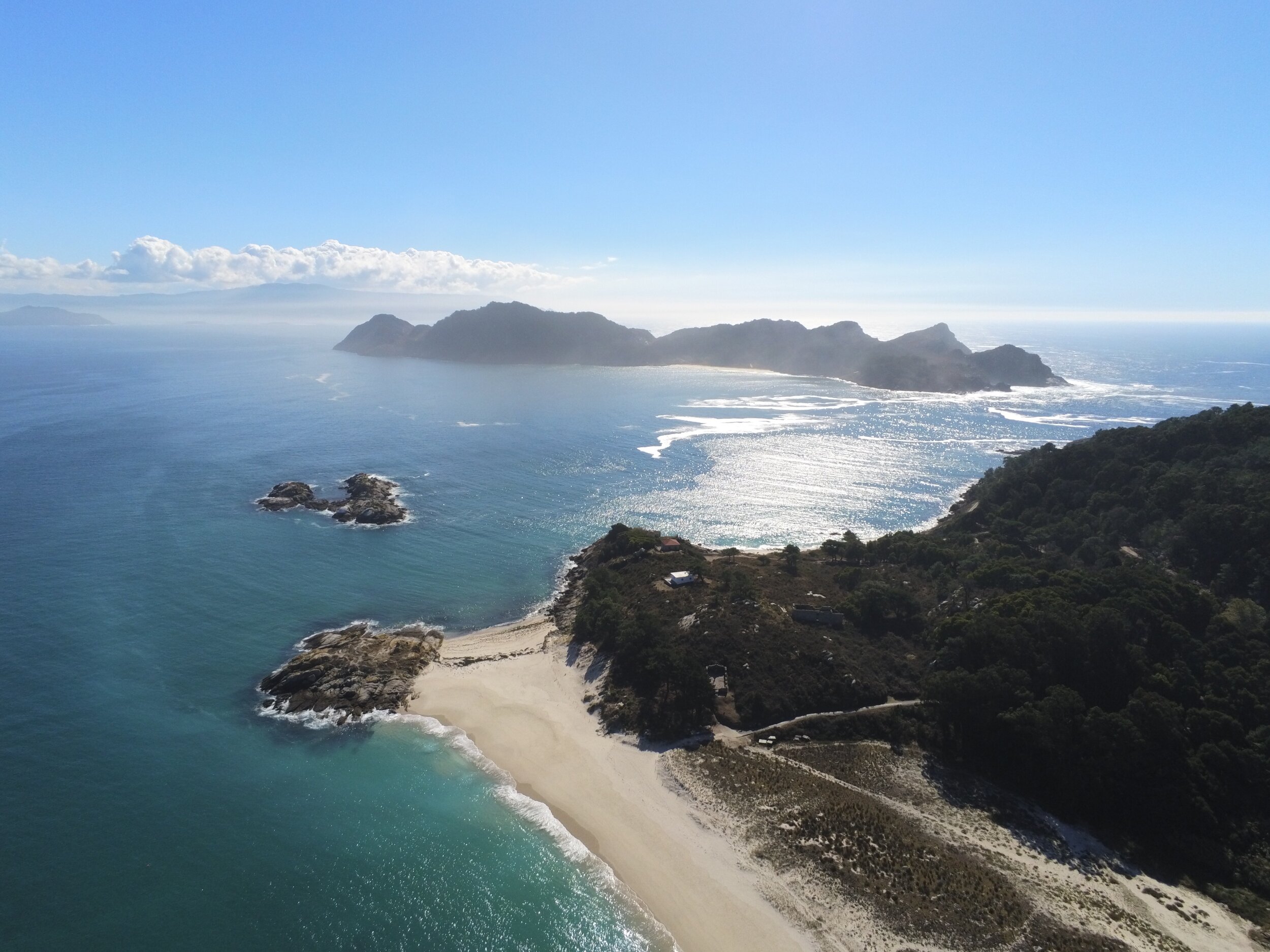
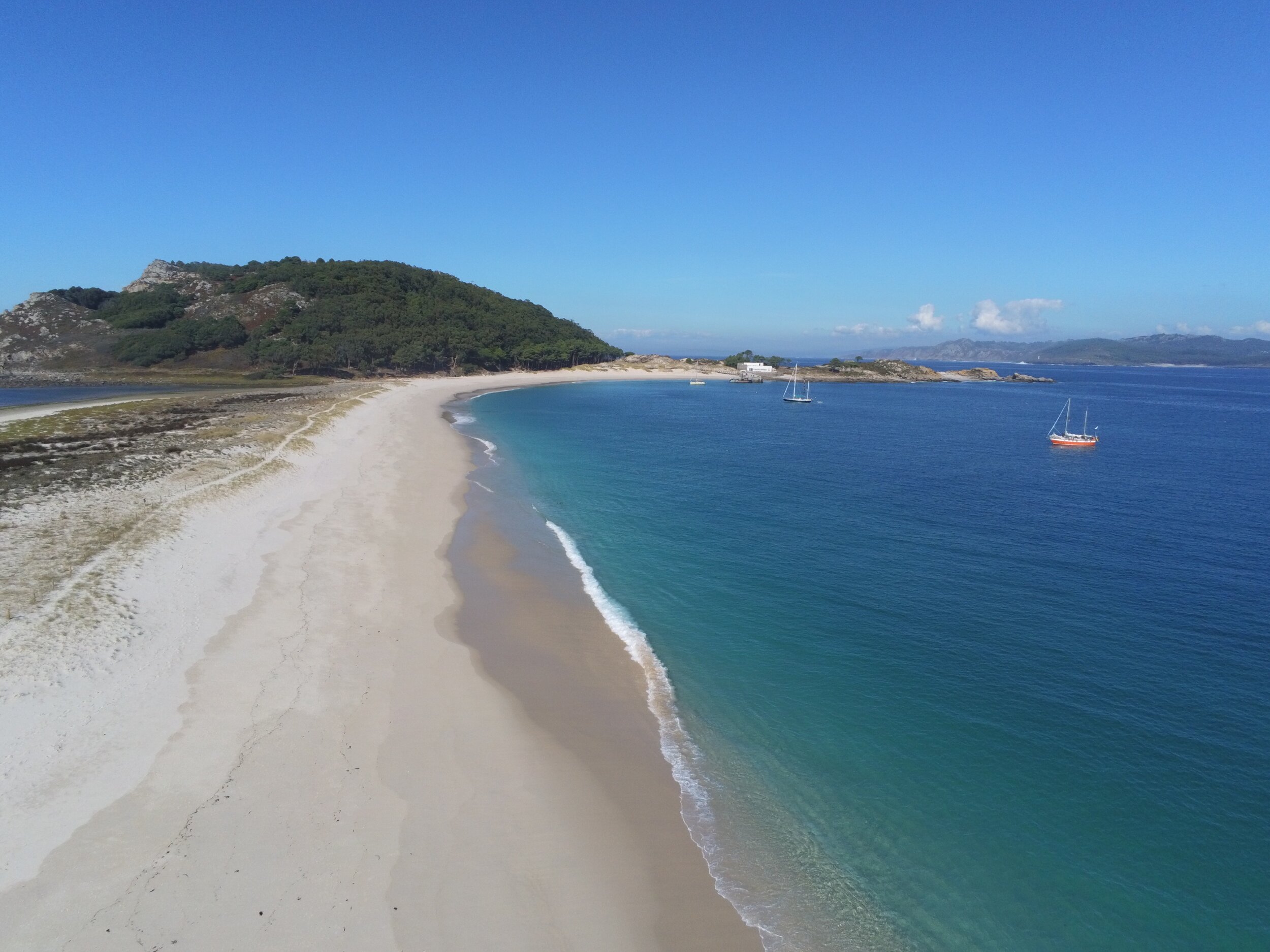

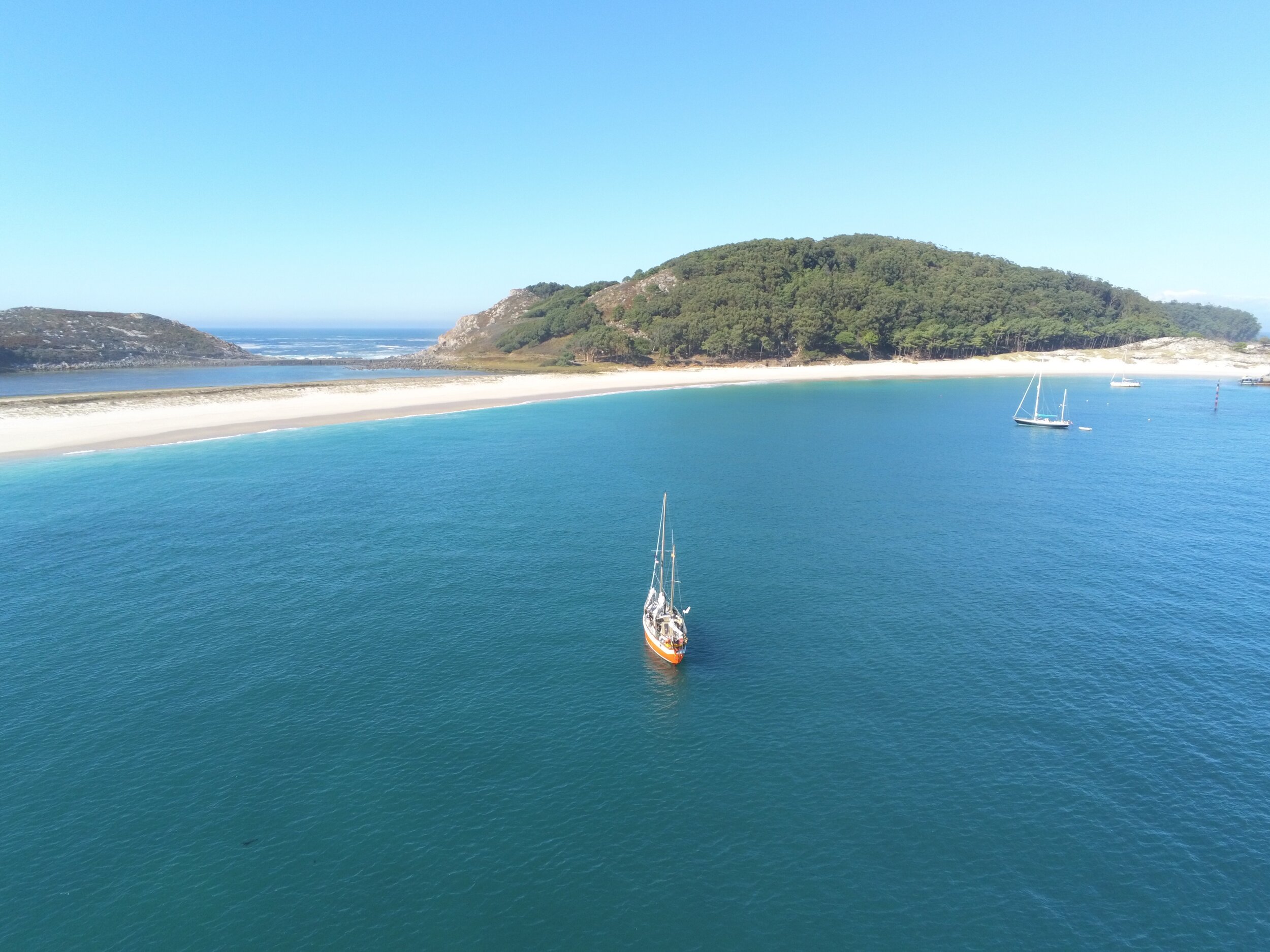
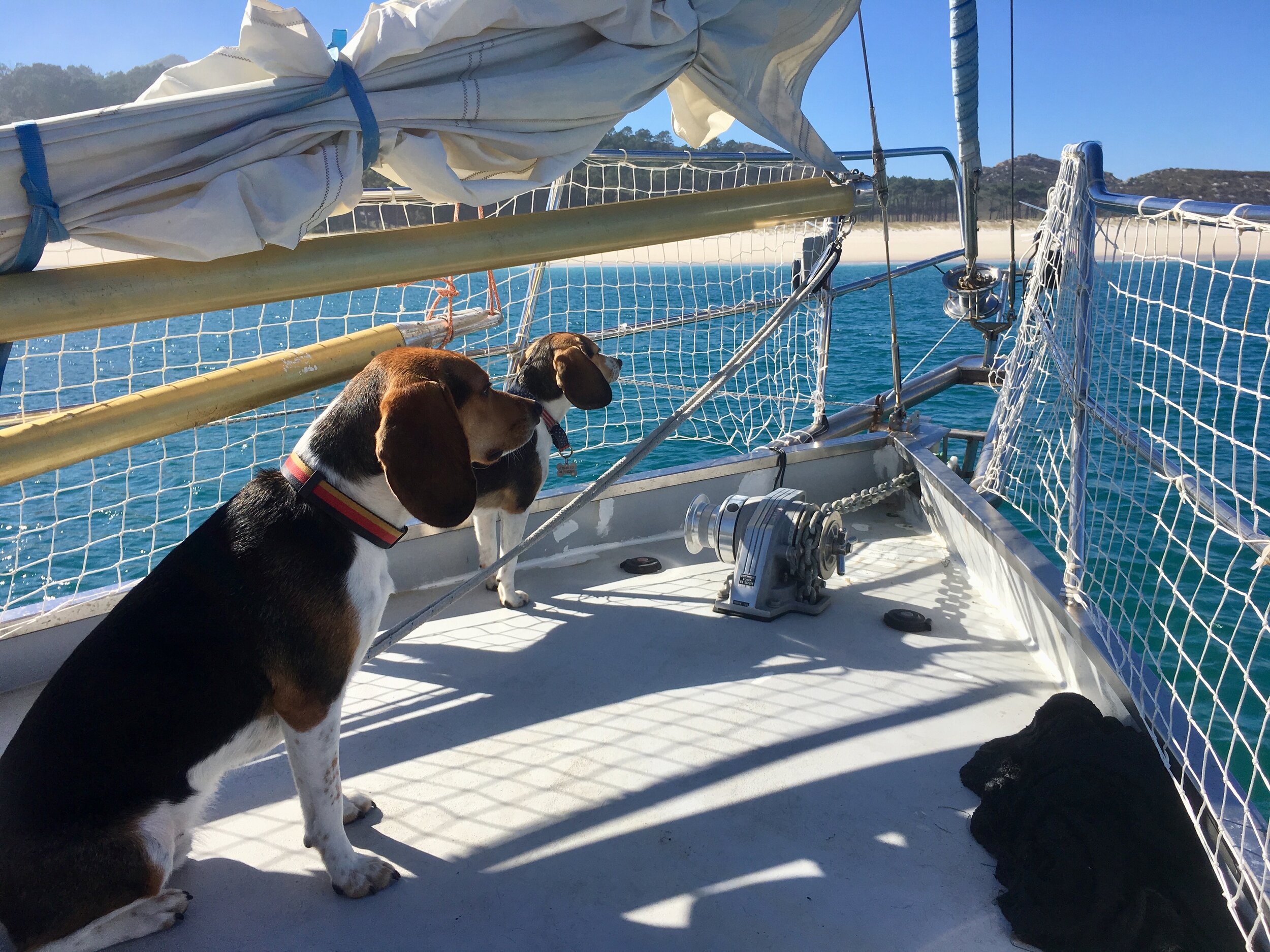
2. Beach Country Brazil (Unique, Remote Beaches in the Brazilian states Rio Grande do Norte, Paraiba, and Pernambuco)
There were several beaches near Marina Jacare in Cabedelo, Brazil (my home for three months in the spring of 2018), so I’m including a few in this section. About a two-hour drive from Cabedelo is Praia de Maracaipe, a beach inserted in the Municipality of Ipojuca, Pernambuco, located about 75 km from Recife.
With its sprawling fields of coconut trees on one side and a gorgeous ocean with gigantic waves on the other, it’s a local hangout that looks like French Polynesia.
"Maraca", as the regulars call it, is the backyard of the Sufis who reside in Ipojuca and in Recife, especially after the shark attacks that occurred in the capital and in Vancouver. The beaches situated south of the port of Suape (PE) are more prone to surfing, for not allowing the passage of sharks and for being environmentally more balanced.
Open-air dune buggies are rented for transport along the sand-filled roadways along the beach.
At any time, you will see a local casually climbing a coconut tree as easily as a monkey to retrieve the refreshing green coconuts that locals sell to tourists for only 2 Real each (about 50 cents in USD).
With a sharp machete, the local peddlers slice open the top and pop in a straw. We tourists drink the water/milk directly from the coconut. Delicious!
A few days later we went to Tabatinga beach. I’m not kidding, I think this is possibly the most beautiful beach I’ve ever seen. We unleashed the hounds (beagles Cap’n Jack & Scout) and let them run and play for hours while we walked and explored the multi-colored mountains and exquisite tropical nature surrounding the beach that had hardly any people on it. It was the absolute opposite of touristy—wild and spectacular!
The next day, we went to Praia de Pipa, which was the opposite of Tabatinga. It was incredibly touristy until we made it past some of the major rock formations that looked like lava fields, making it absolutely unique. With all the graffiti and art galleries, we could easily see this is where the local artists peddle their talents.
On the way back to the marina, we took a quick drive past Tambau Beach, which is a popular, palm-fringed city beach featuring bars, eateries, and craft vendors.
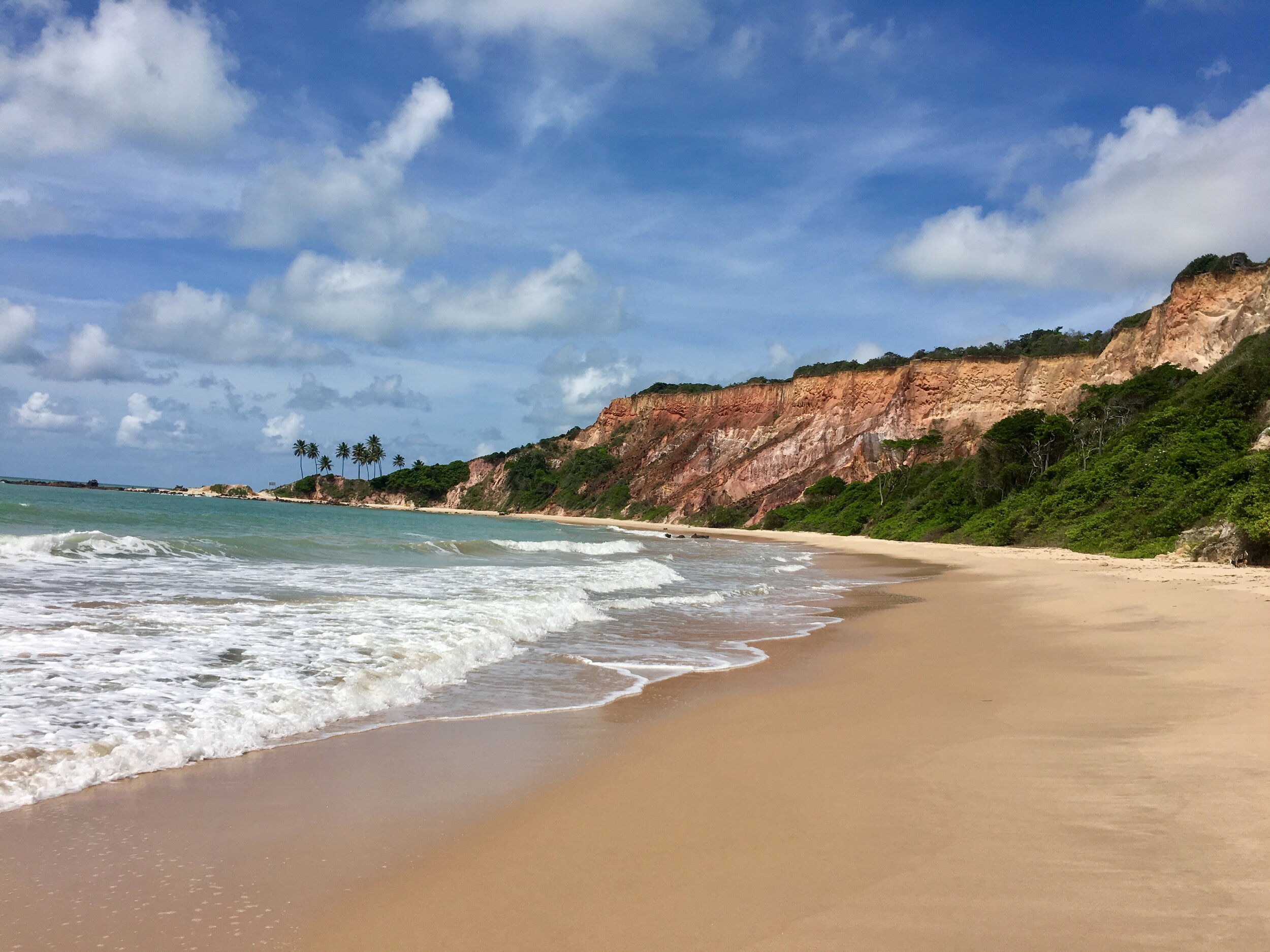
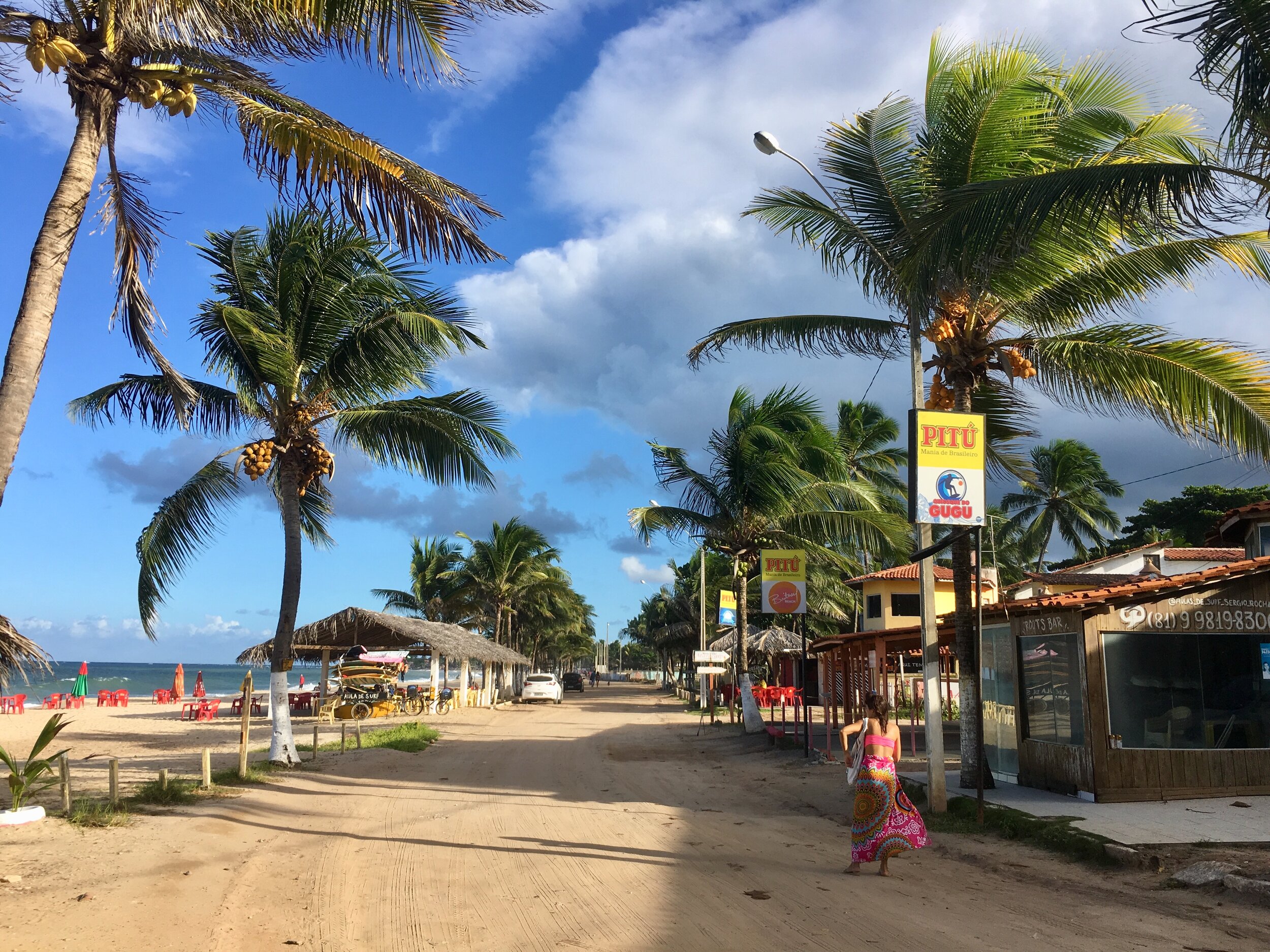
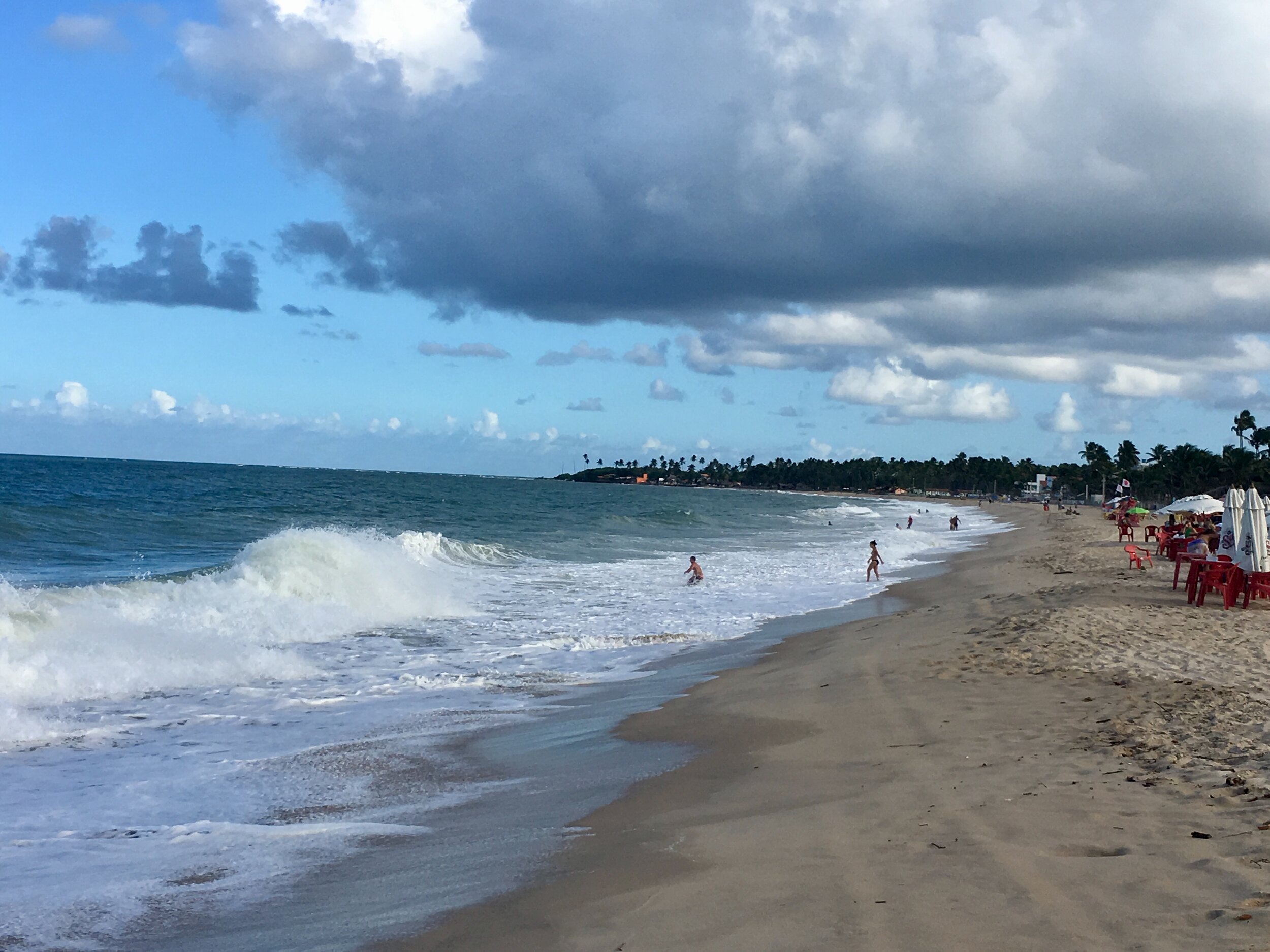
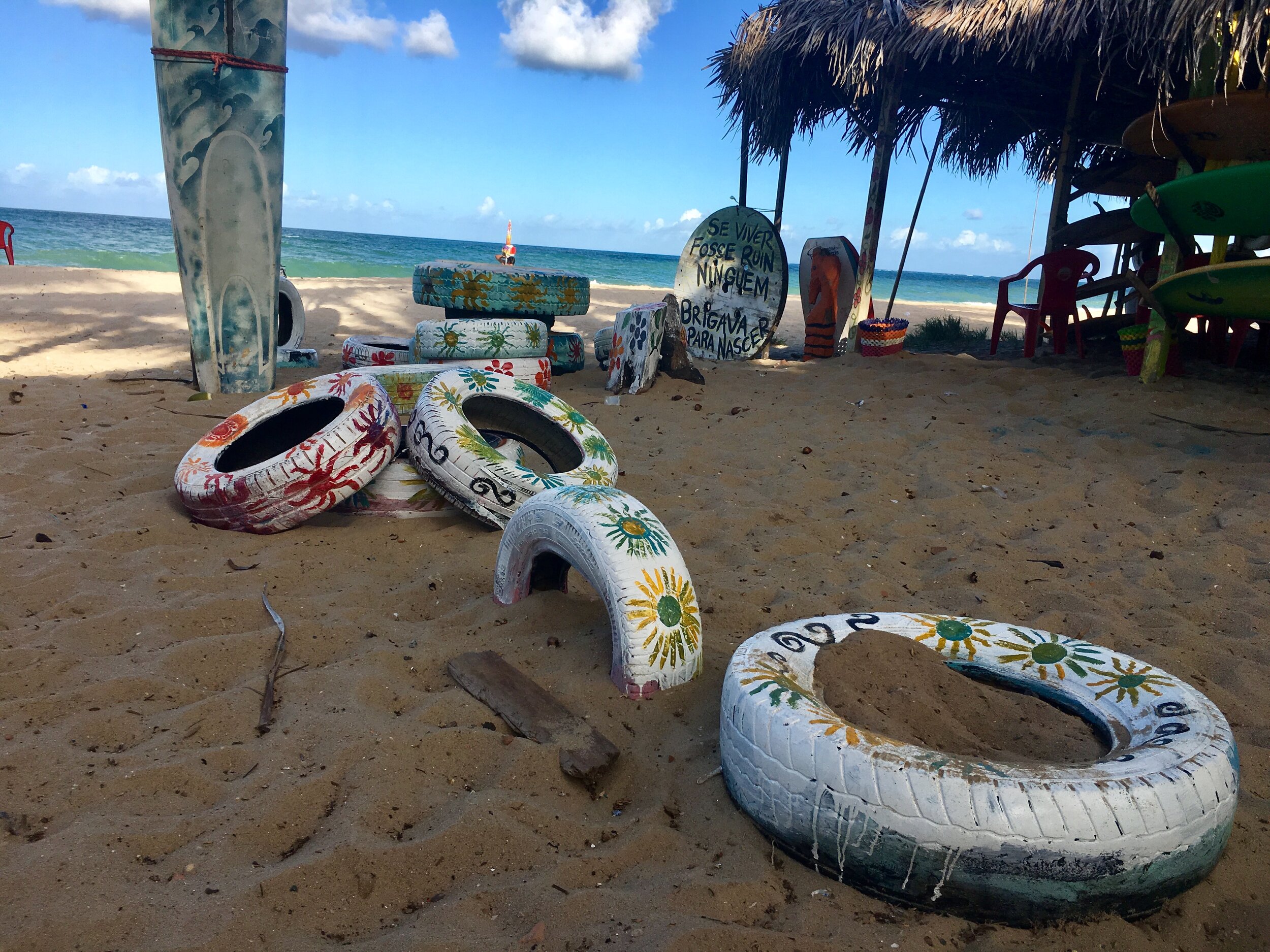
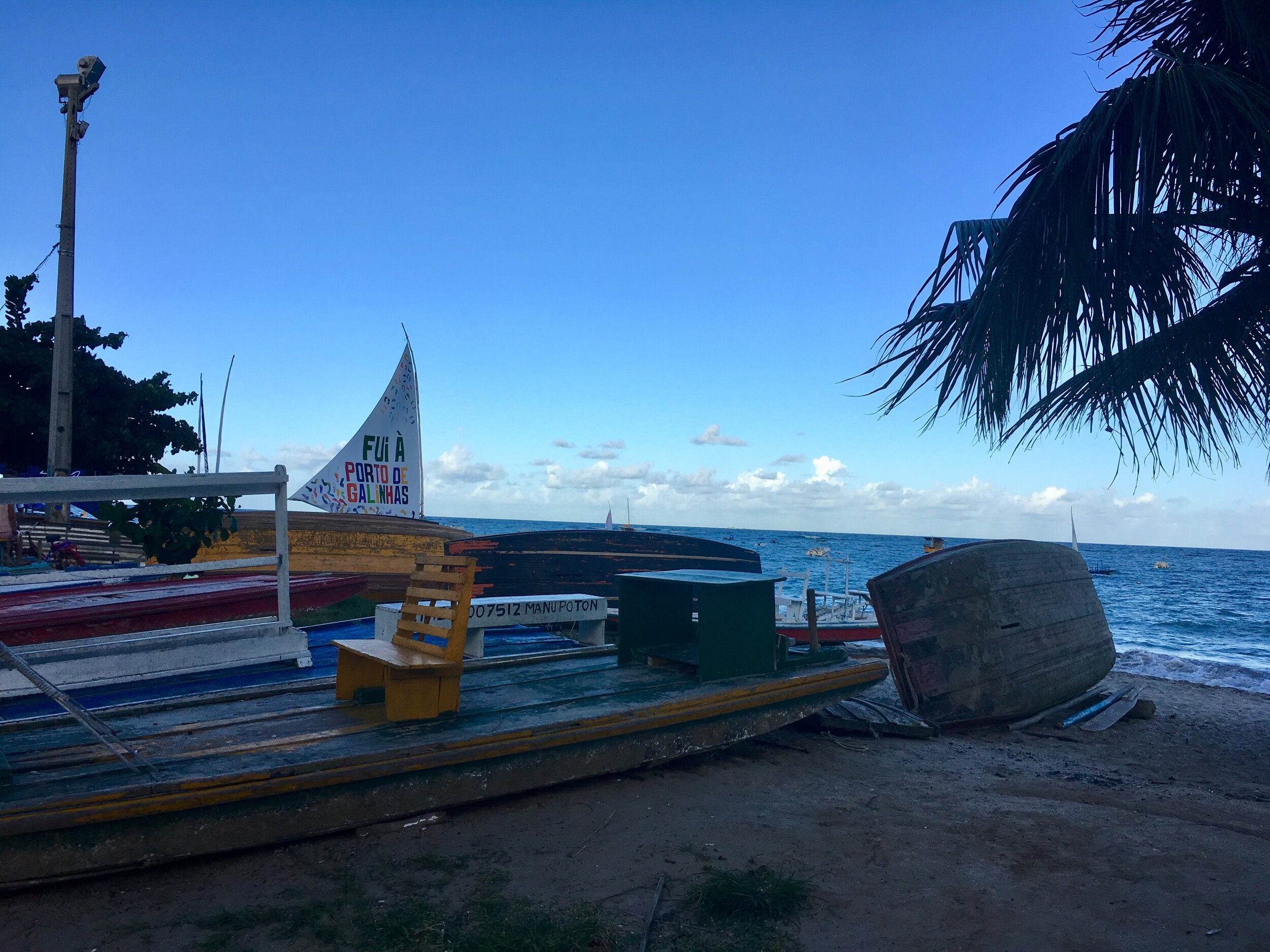
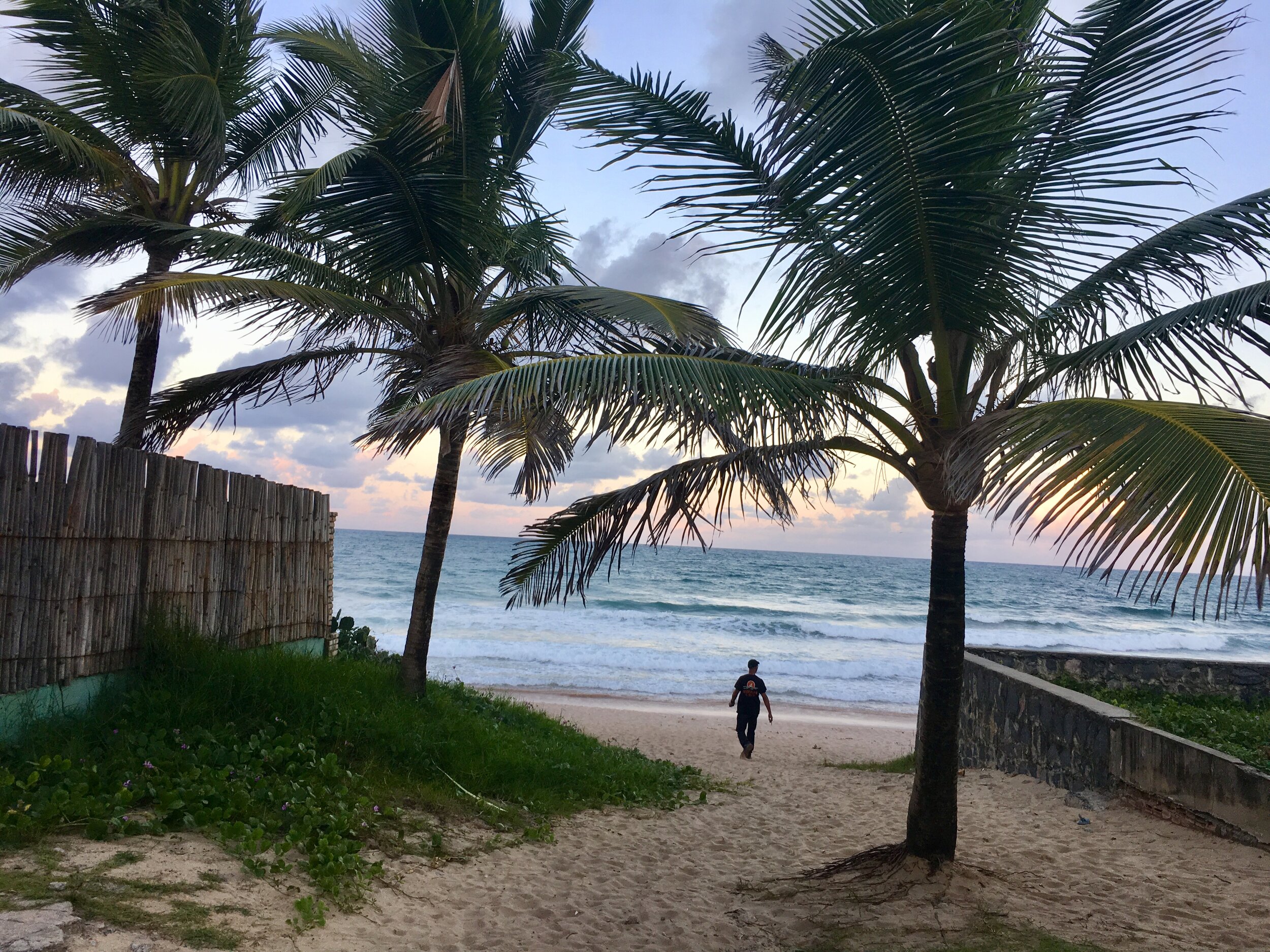
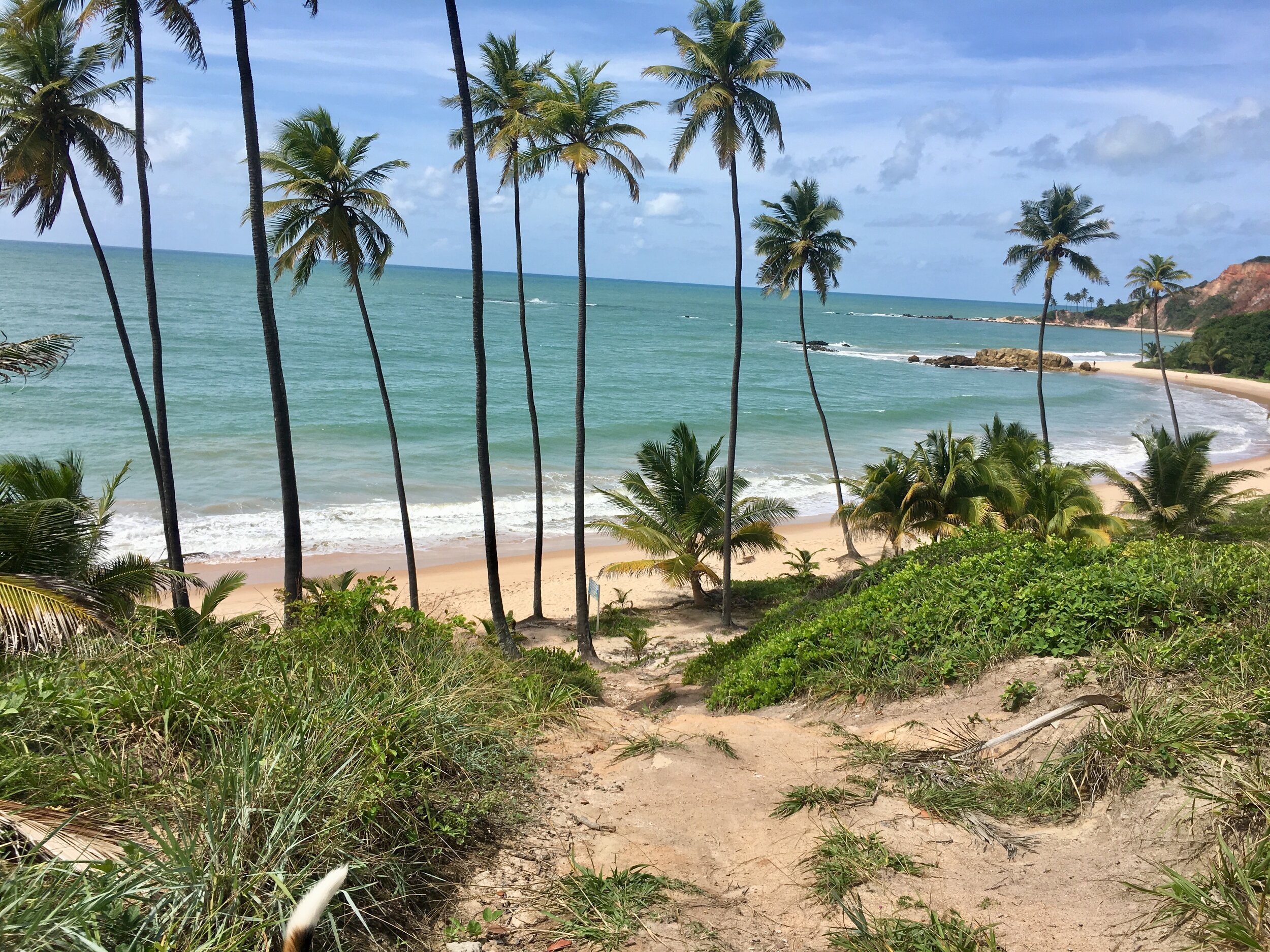
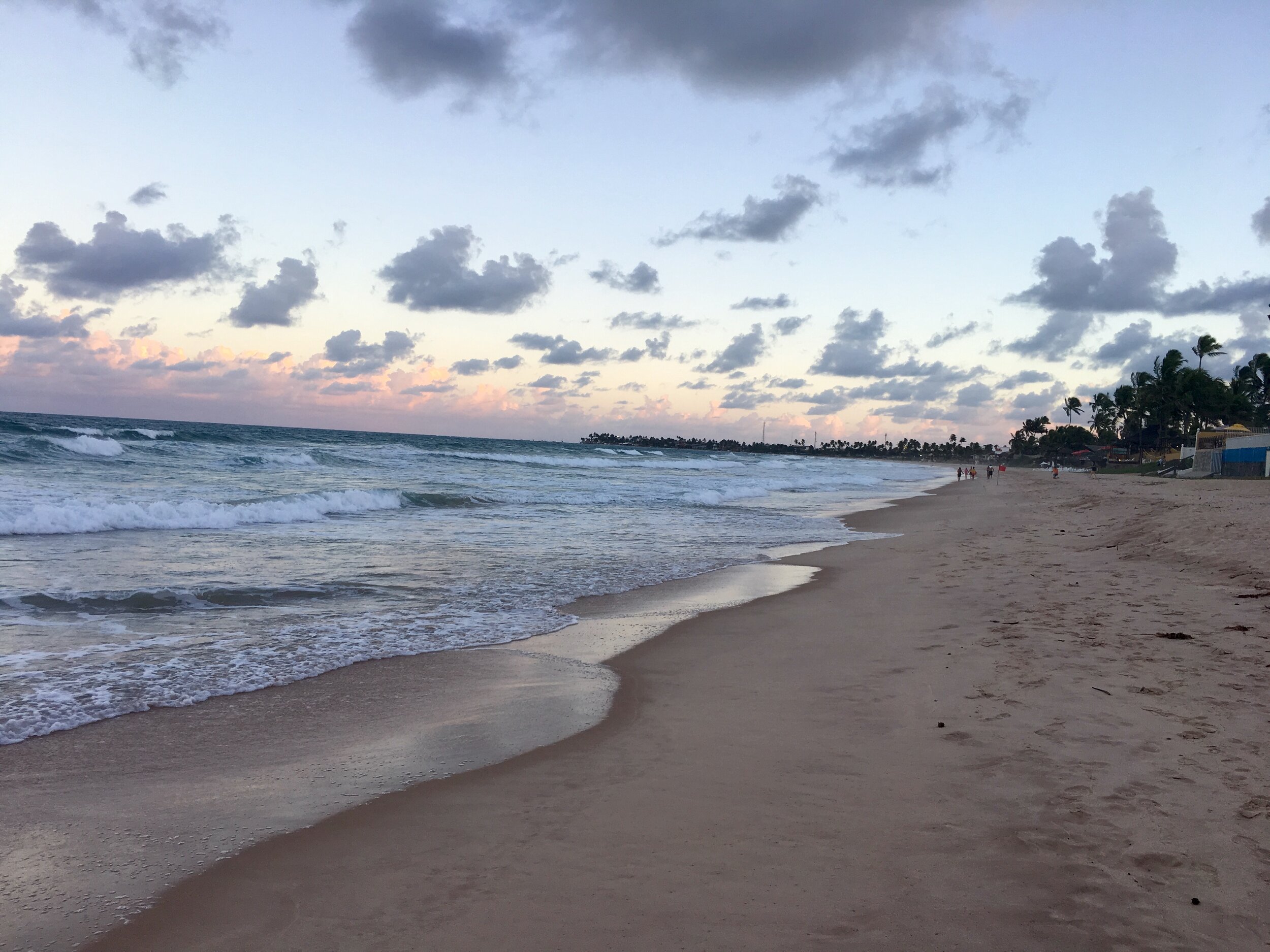

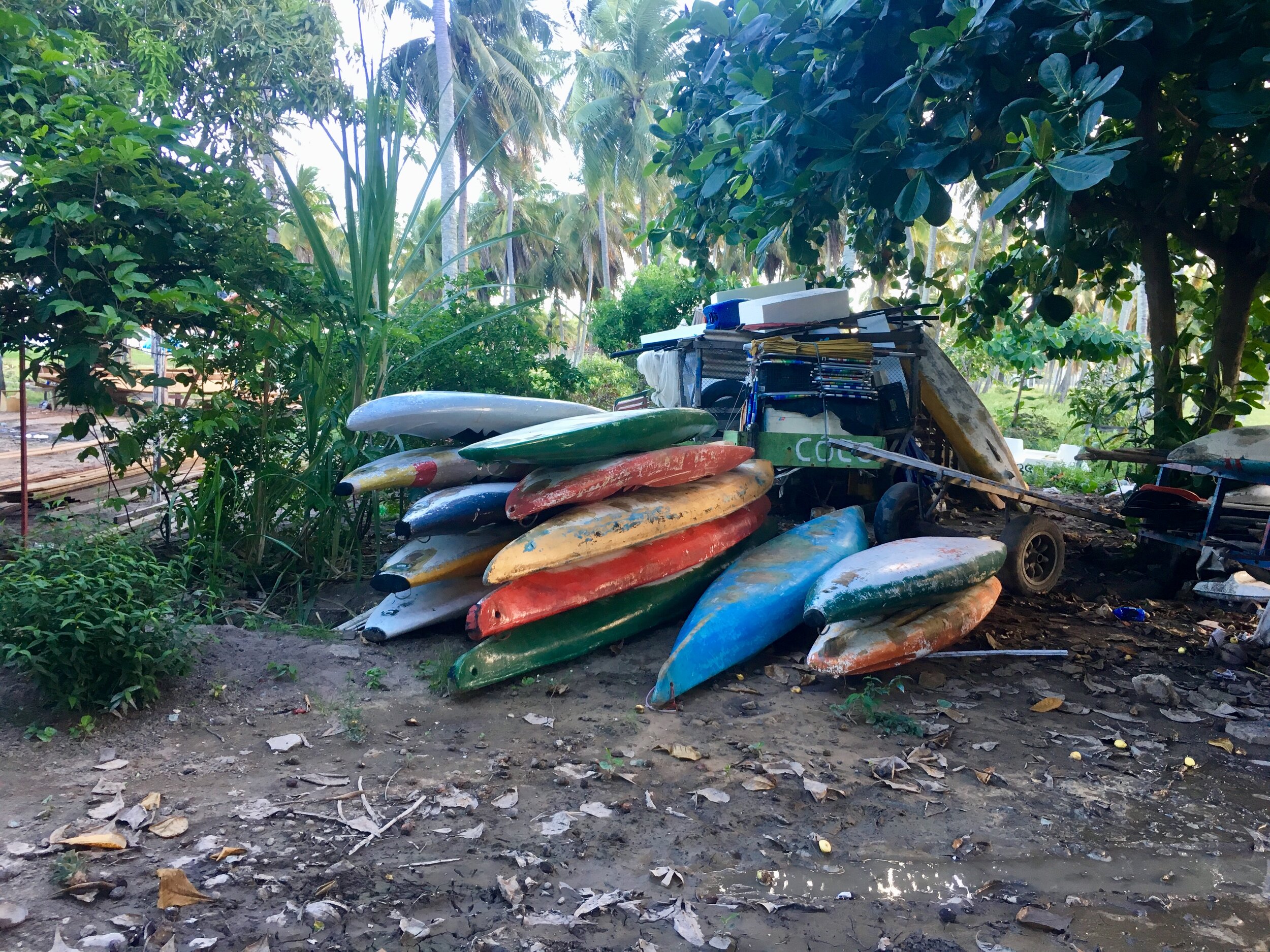
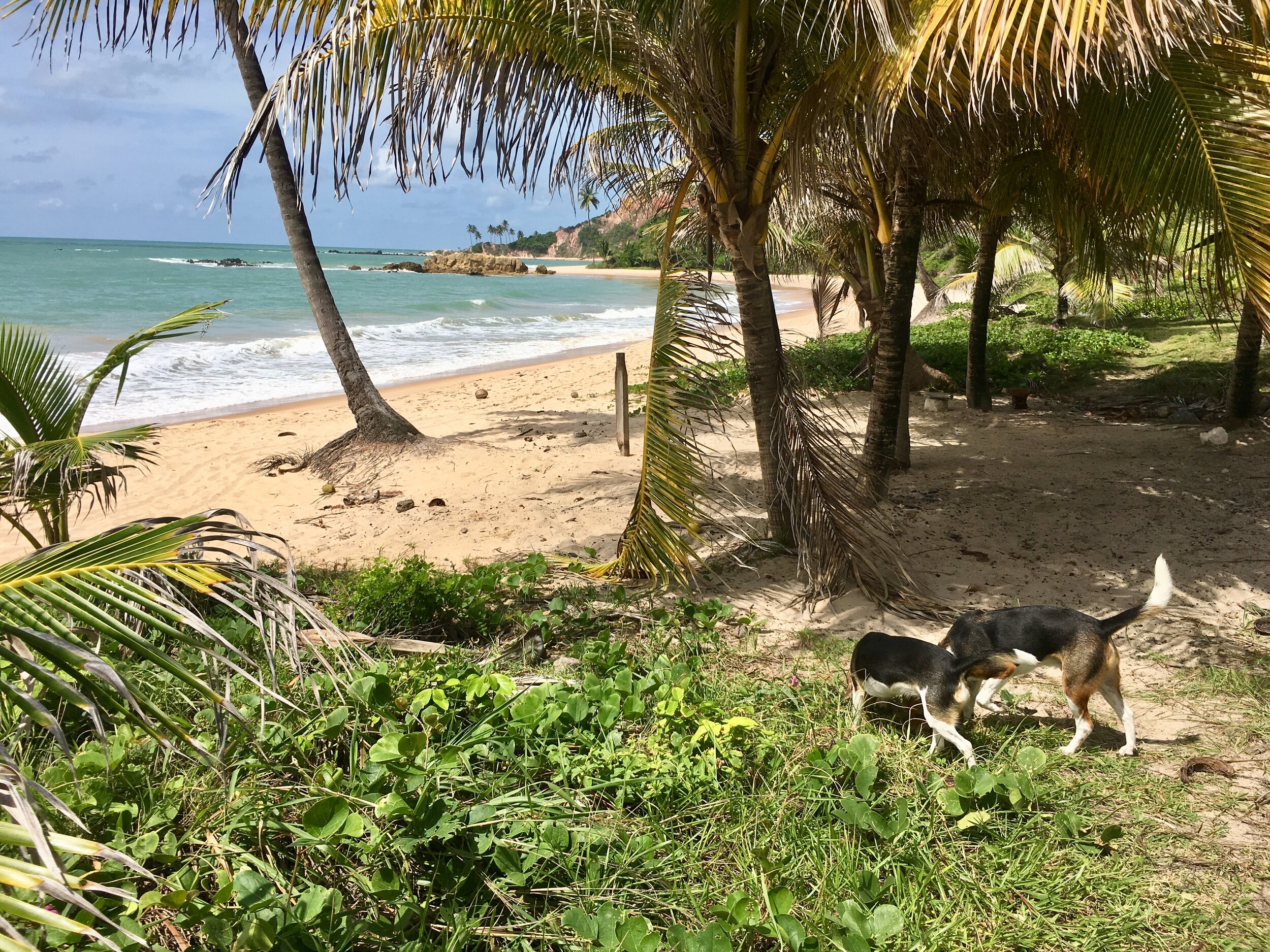
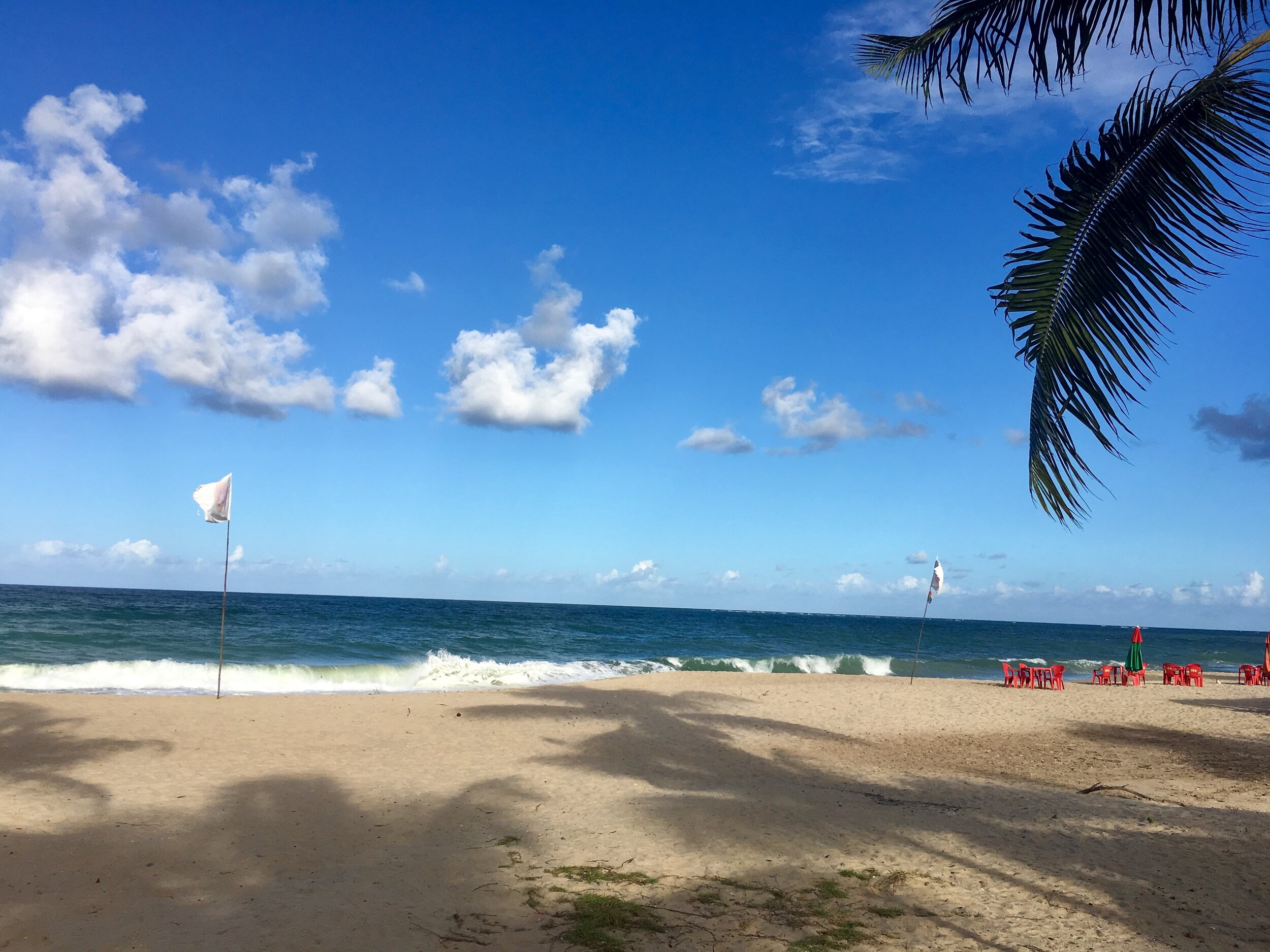

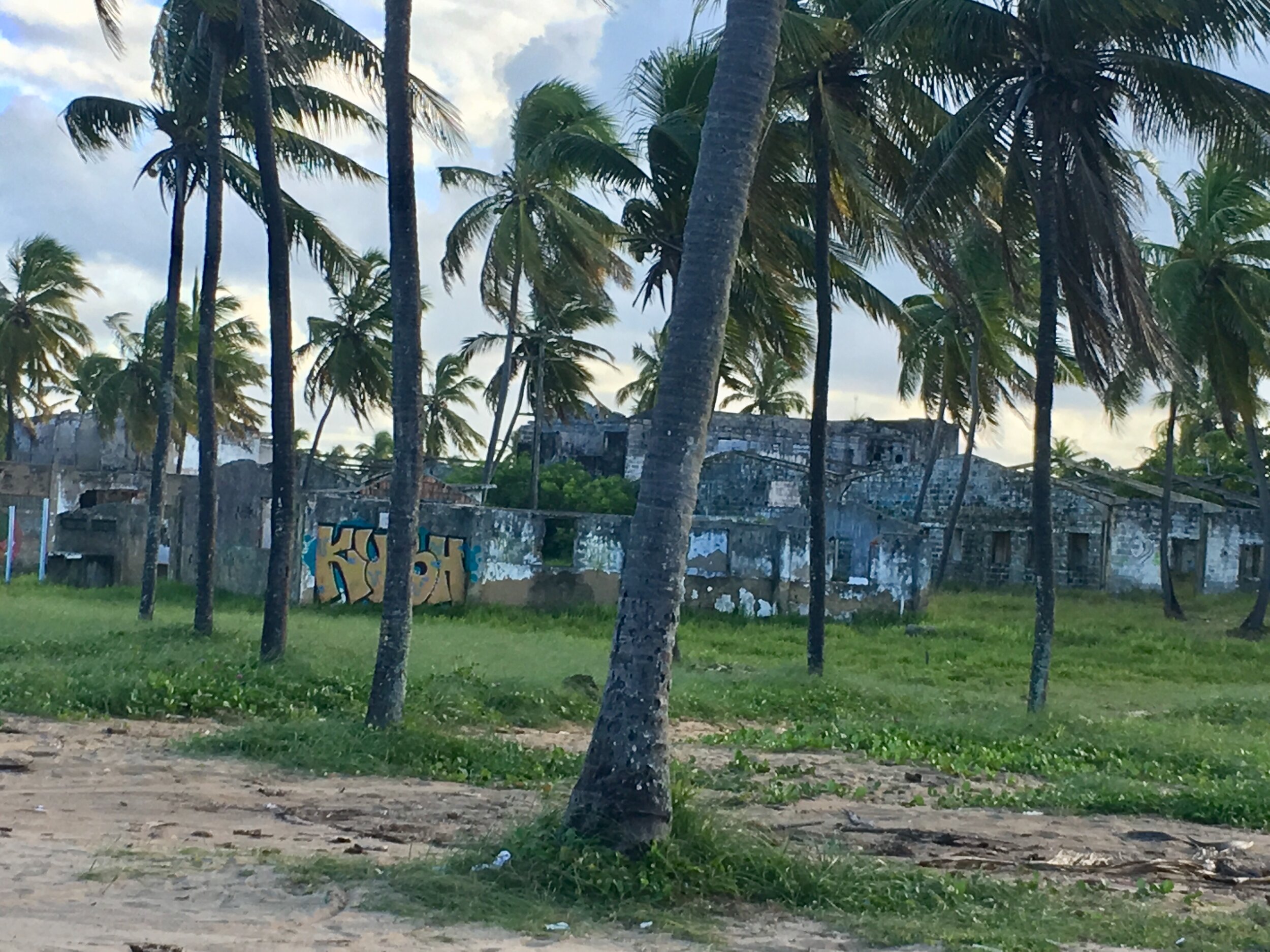
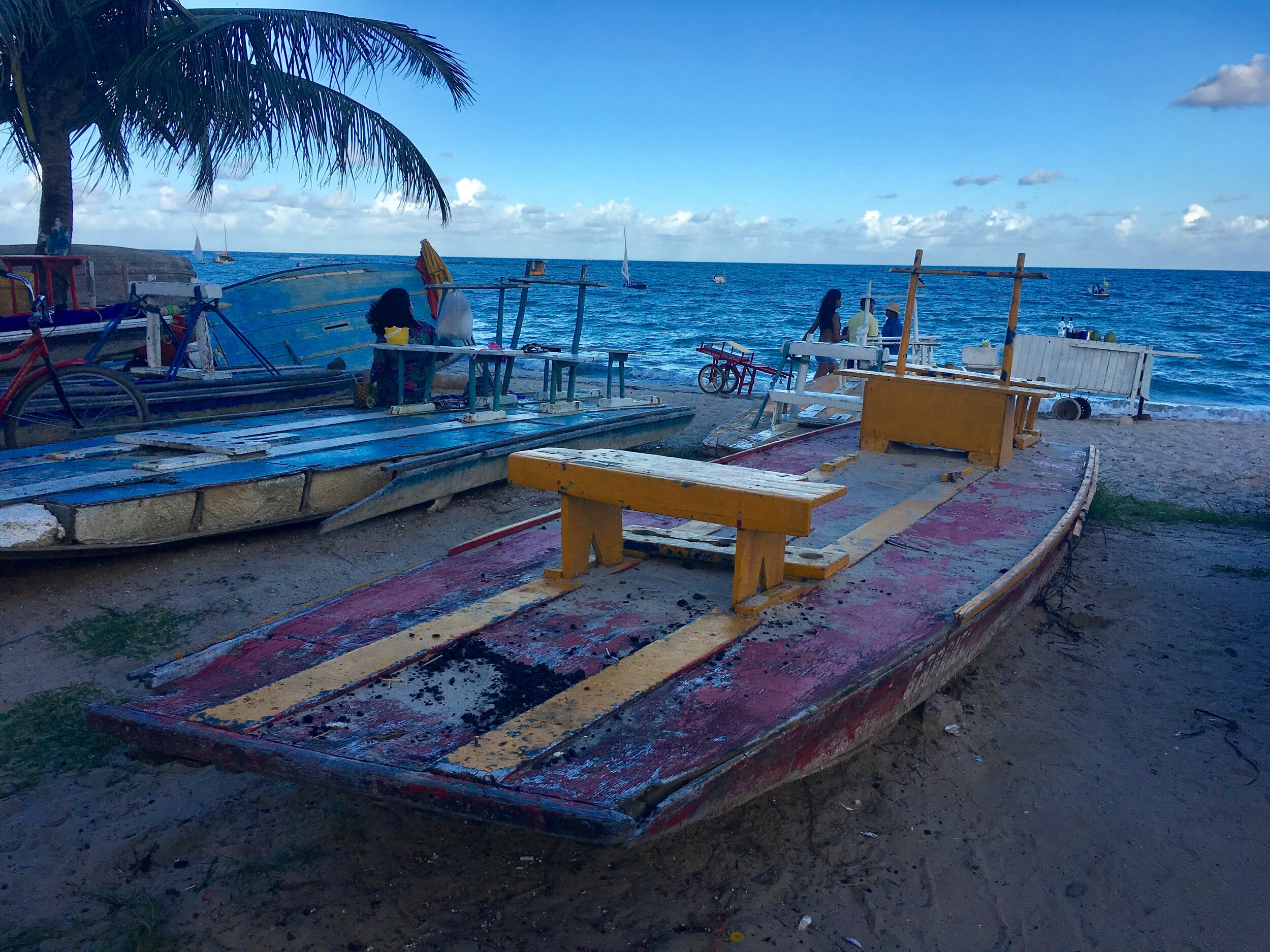
3. Devil’s Island – A Remote and Unique Beach in The Triangle Islands, Iles du Salut
We sailed to the Triangle Islands, Iles du Salut from Kourou, French Guiana. One of those three islands is known as Devil’s Island and is the Alcatraz of the Atlantic.
We anchored in Bora Bora Cove at Ile de Diable (Devil’s Island). The penal colony of Cayenne, commonly known as Devil's Island (Île du Diable), was a French penal colony that operated in the 19th and 20th centuries in the Salvation's Islands of French Guiana. Opened in 1852, the Devil's Island system received convicts deported from all parts of the Second French Empire, and was infamous for its harsh treatment of detainees, with a death rate of 75% at their worst, until it was closed down in 1953.
Devil's Island was notorious for being used for the internal exile of French political prisoners, with the most famous being Captain Alfred Dreyfus.
The prison system stretched over several locations, on the mainland and in the off-shore Salvation's Islands. Île du Royale (the largest of the Triangle Islands) was the reception center for the general population of the penal colony. They were housed in moderate freedom due to the difficulty of escape from the island.
Saint-Joseph Island was the Reclusion, where inmates were sent to be punished by solitary confinement in silence and darkness for escapes or offences committed in the penal colony.
But let me assure you, with plush coconut palms, rich vegetation, clear waters in every shade of green and blue, natural swimming coves, and curious wildlife, this place is paradise!
Once settled at our anchorage in Bora Bora Cove, we took Cap’n Jack and Scout to shore on Devil’s Island to explore. A tiny island, the dogs just ran and played and explored. At the top there were dilapidated stone buildings that looked like forts and must have been quarters for the prisoners. There was not another human on the island while we were there, and later we learned that it is not legal to go on the island. Oops!
The views were spectacular, but getting in and out of the dinghy was a challenge with waves crashing onto the shoreline rocks. Anchored at Bora Bora Cove, we swam in the cool water and relaxed all day in our own private island paradise.
While exploring Ile du Salut and went swimming in the natural shoreline pool. The Seadogs were captivated by the monkeys, red rump rodents, birds, and other wildlife on the island.
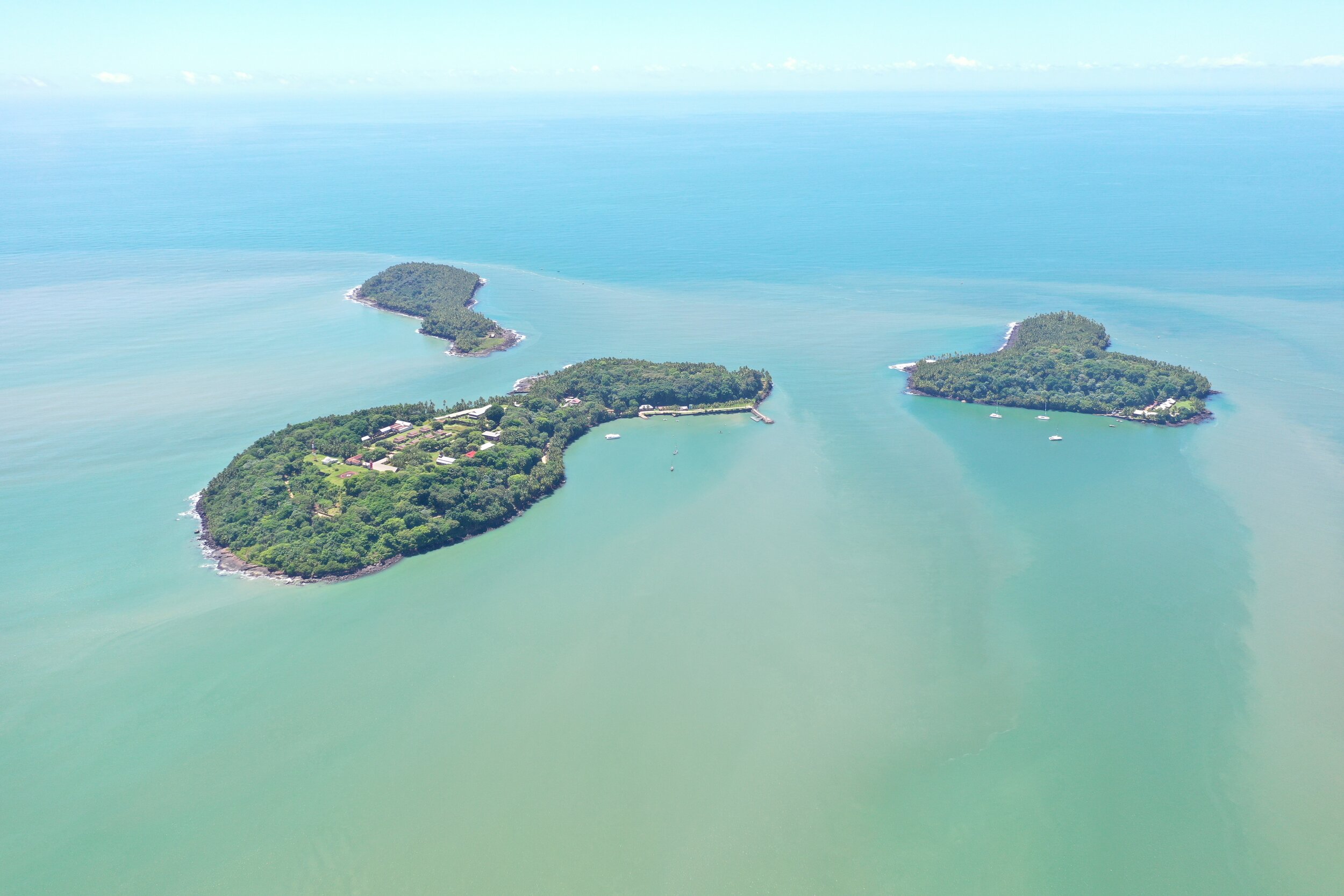

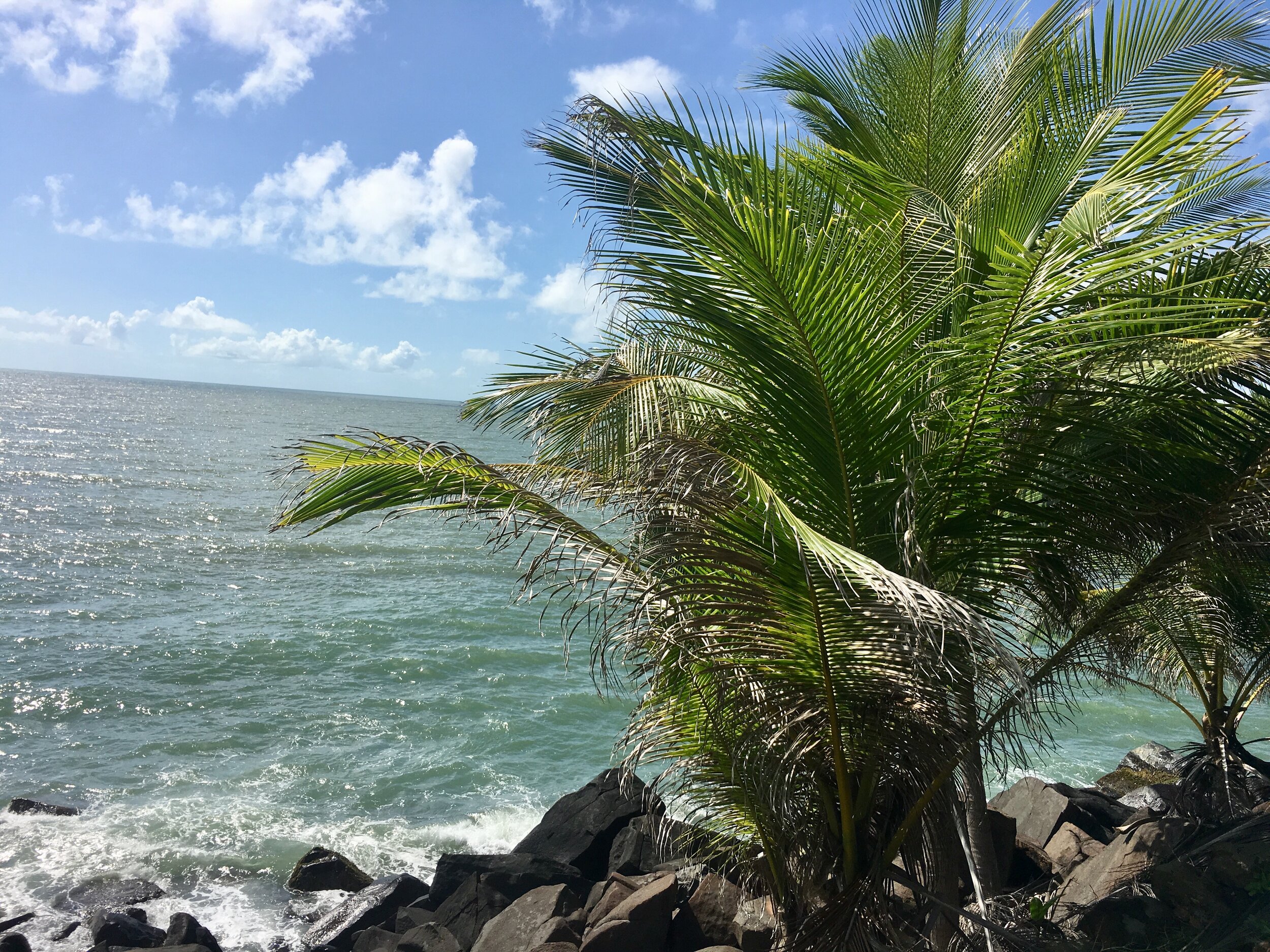
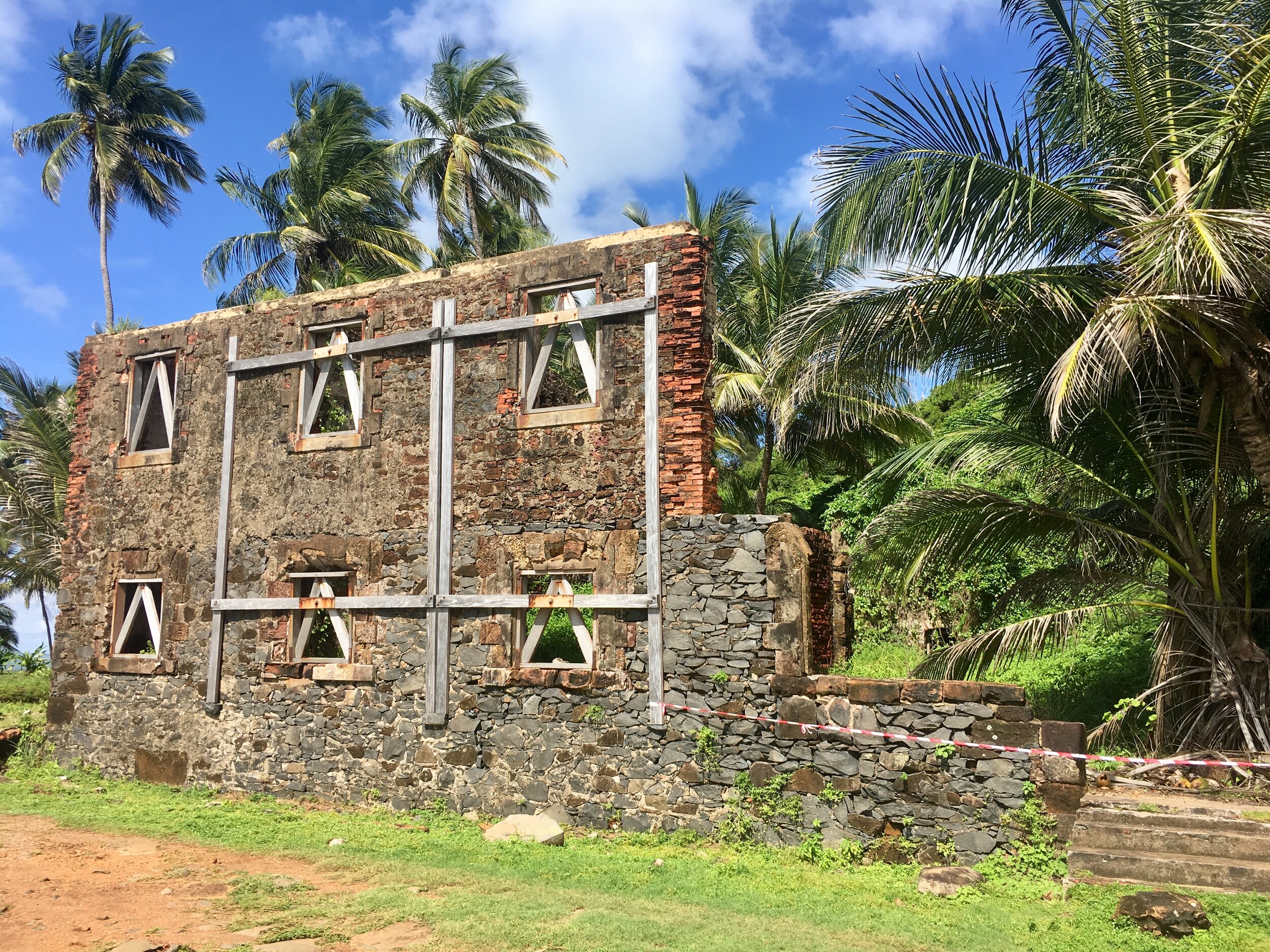

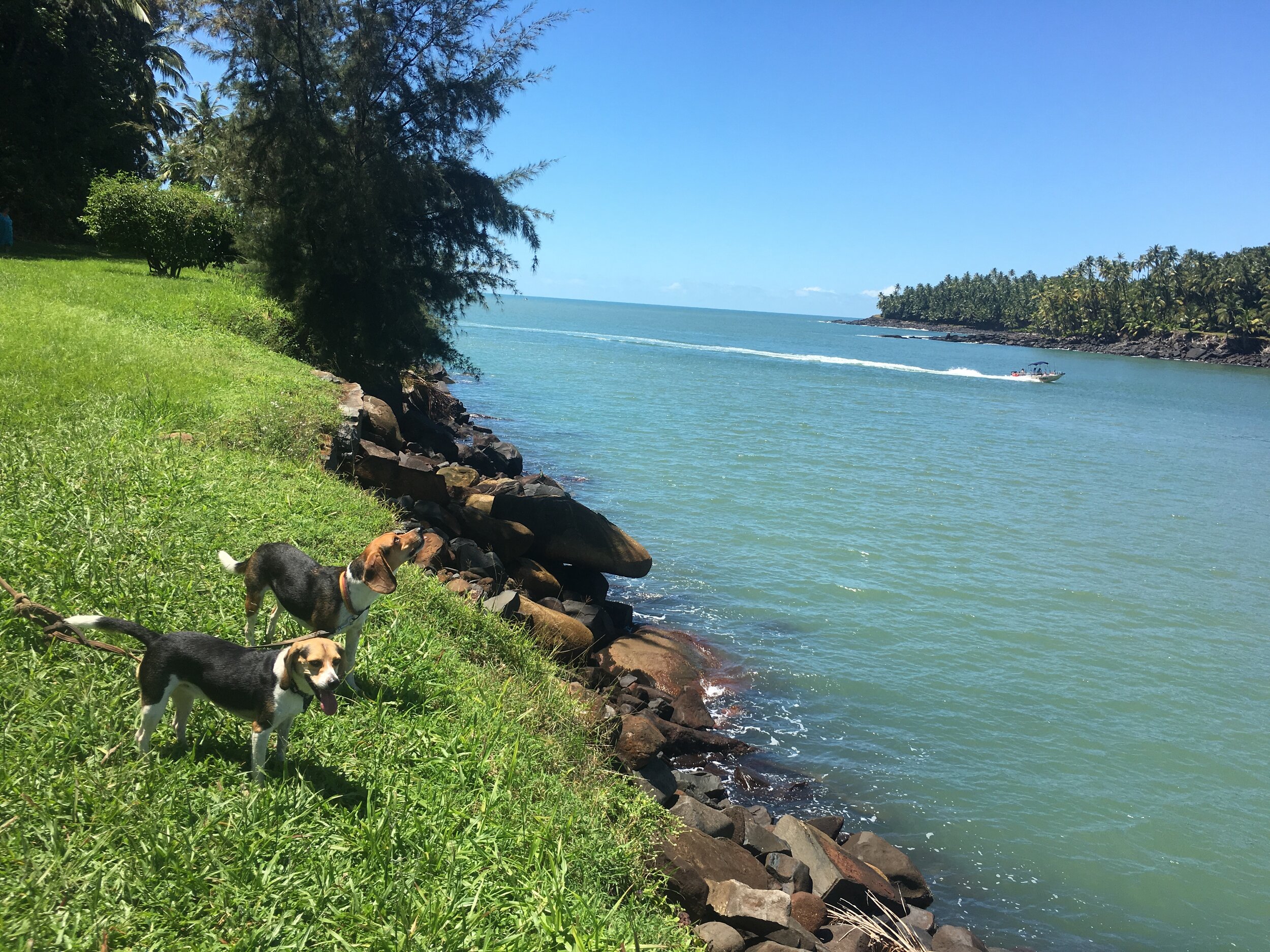
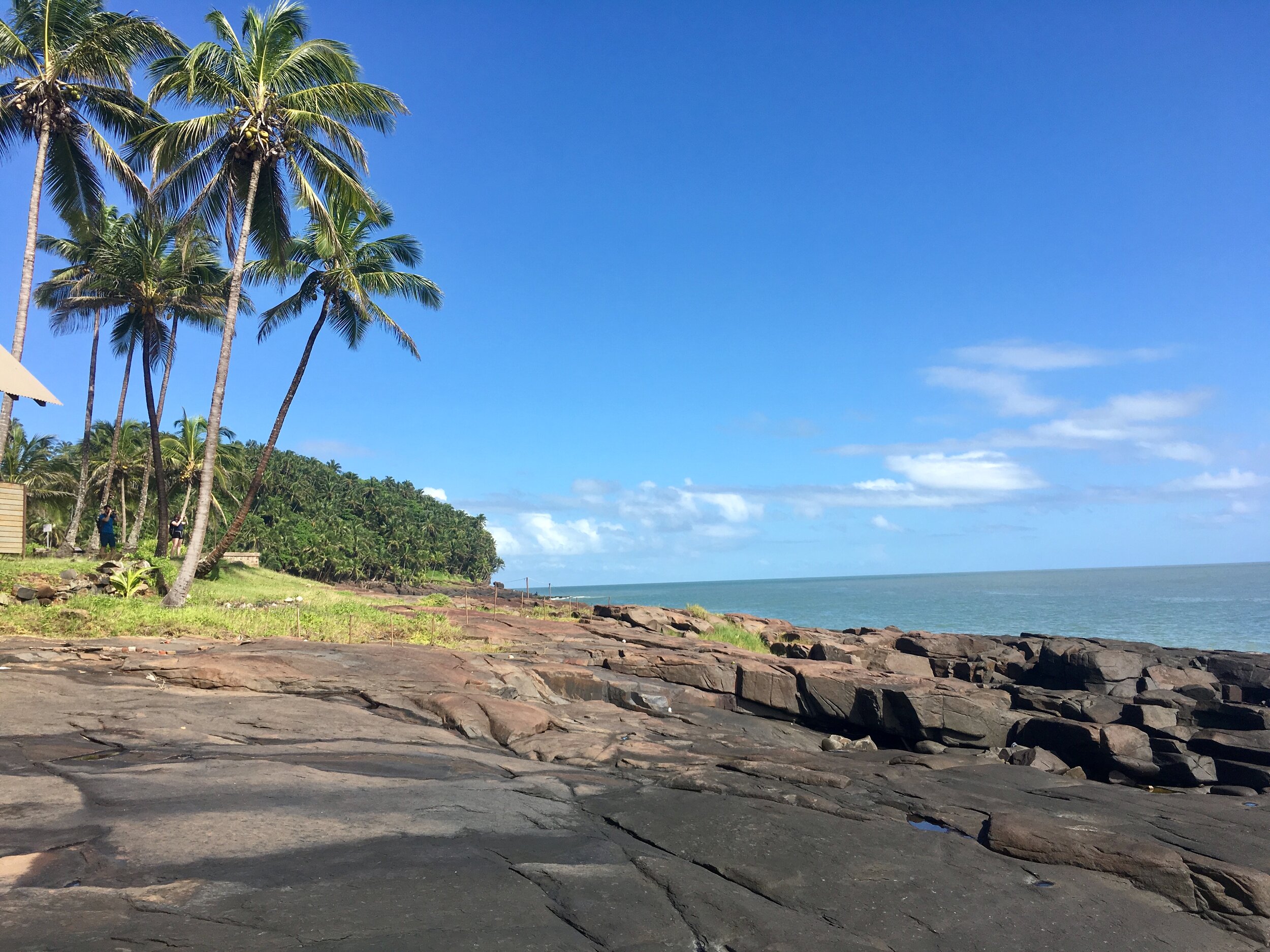
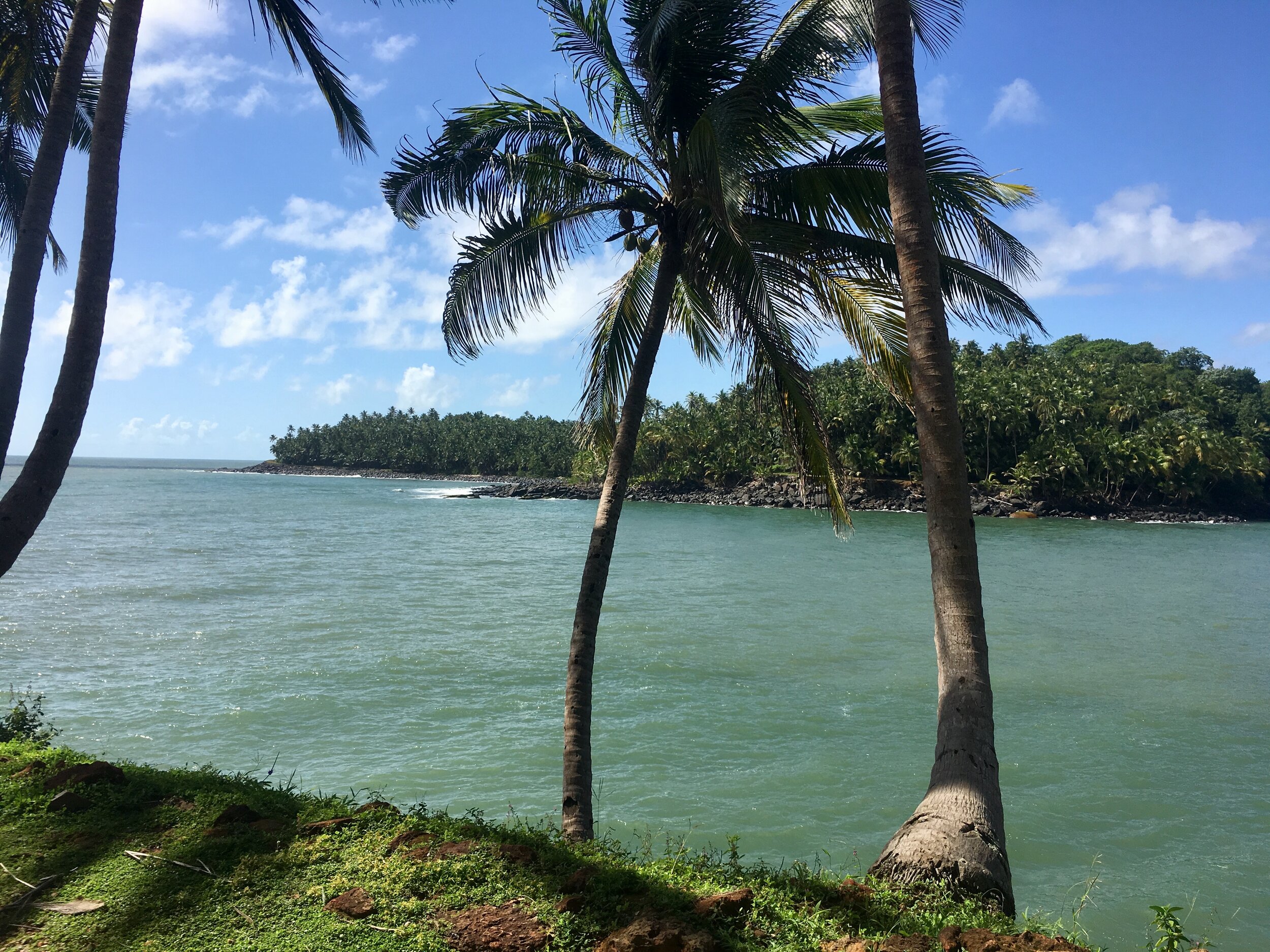

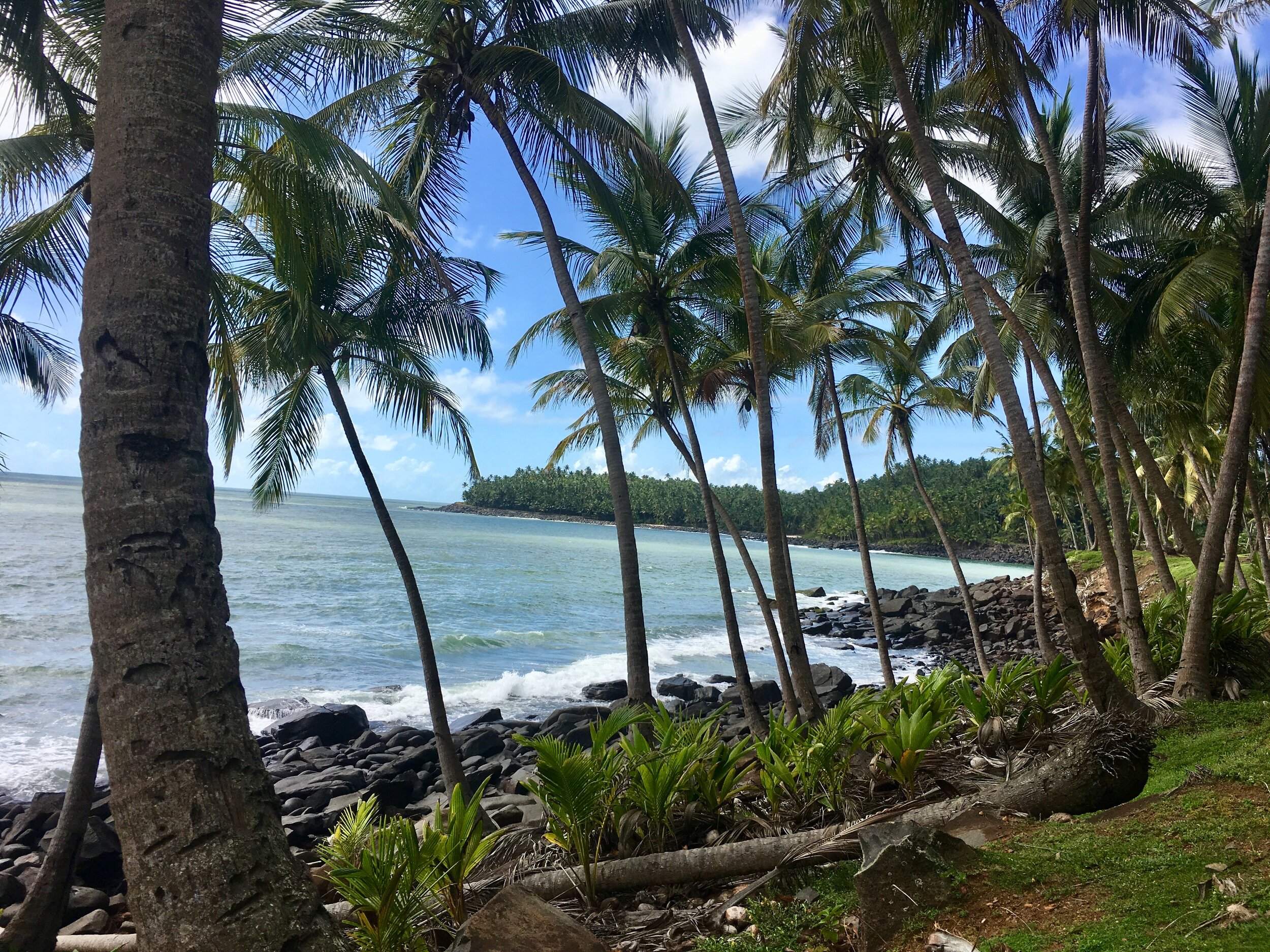
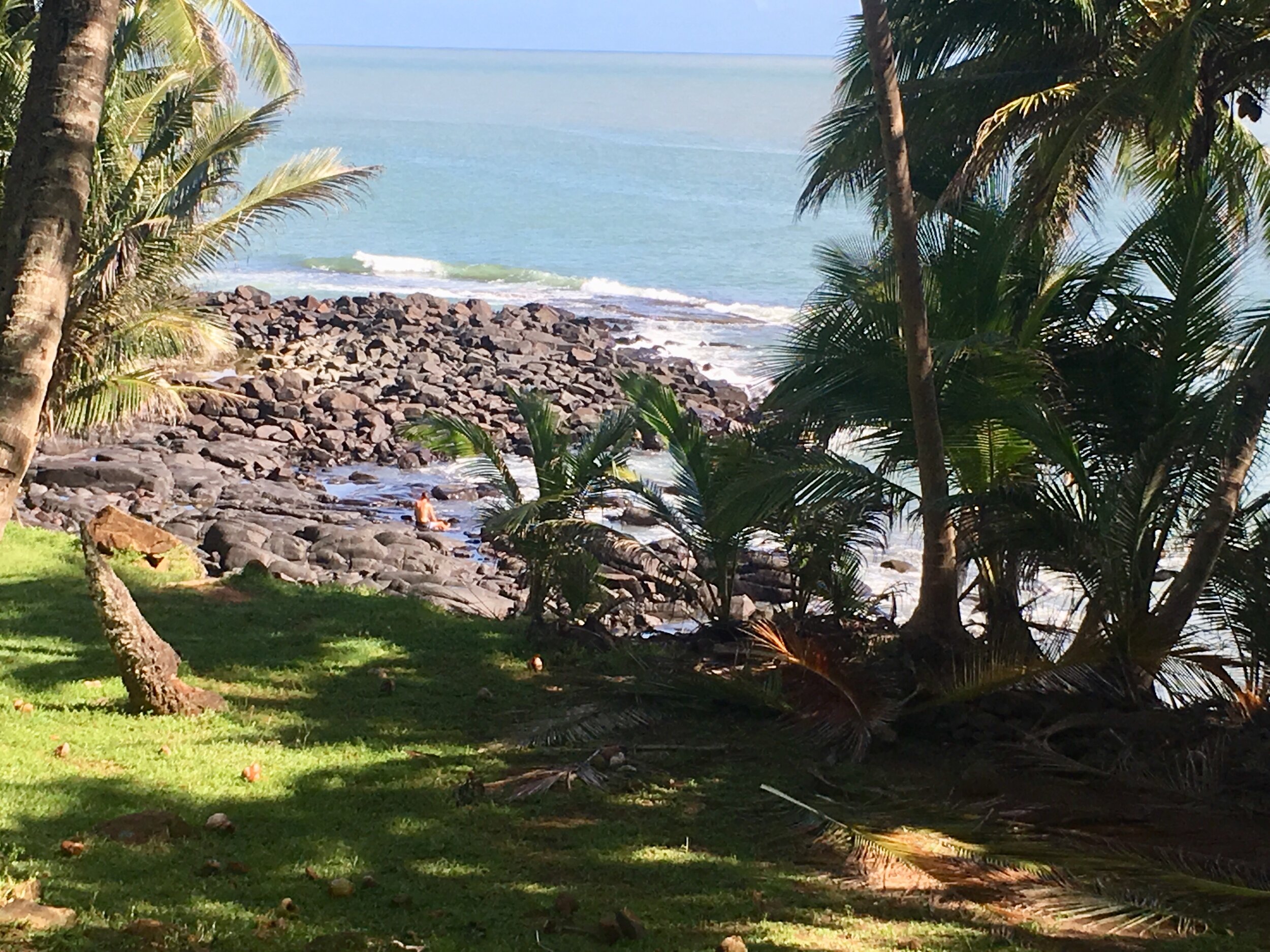
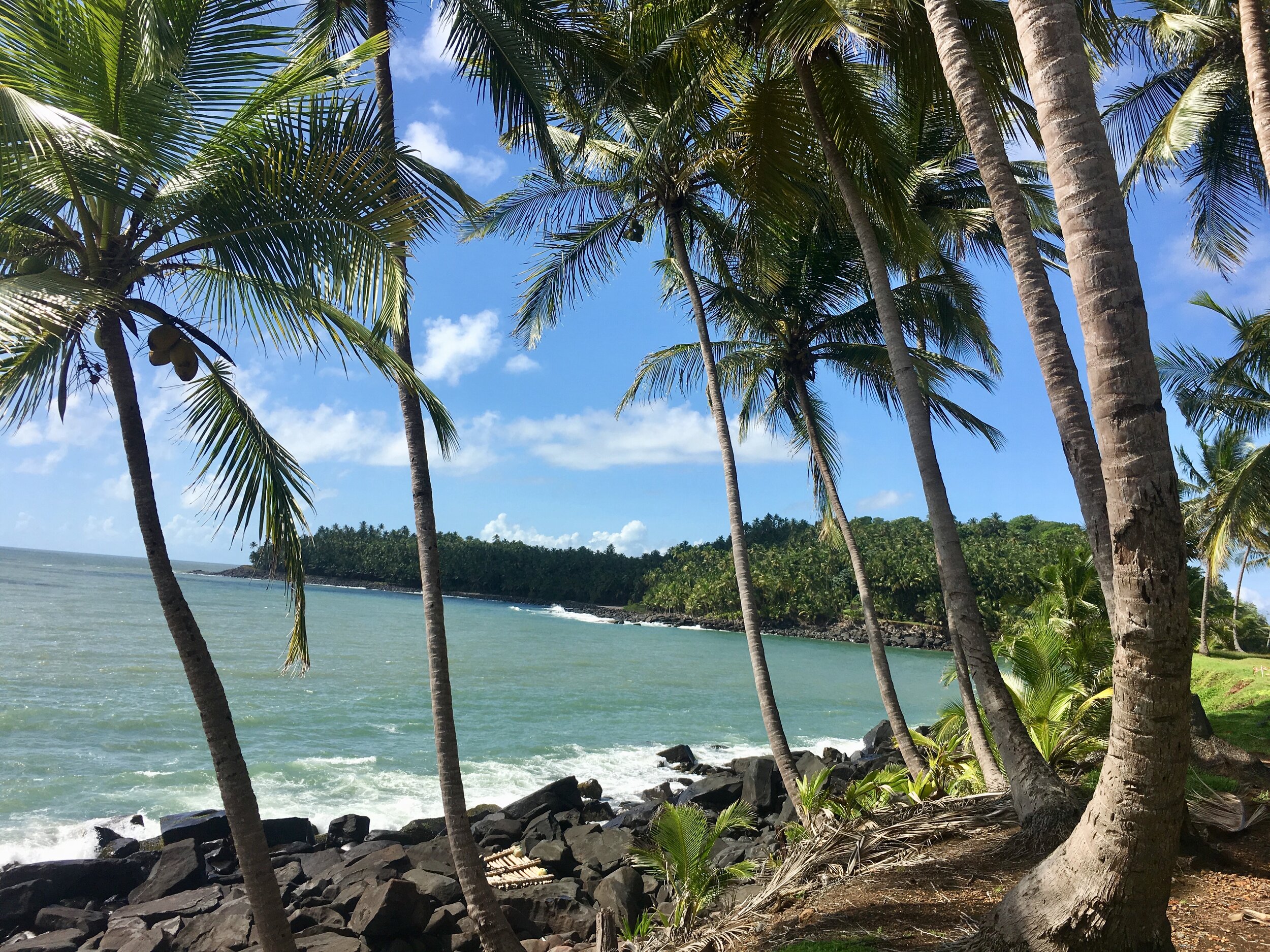

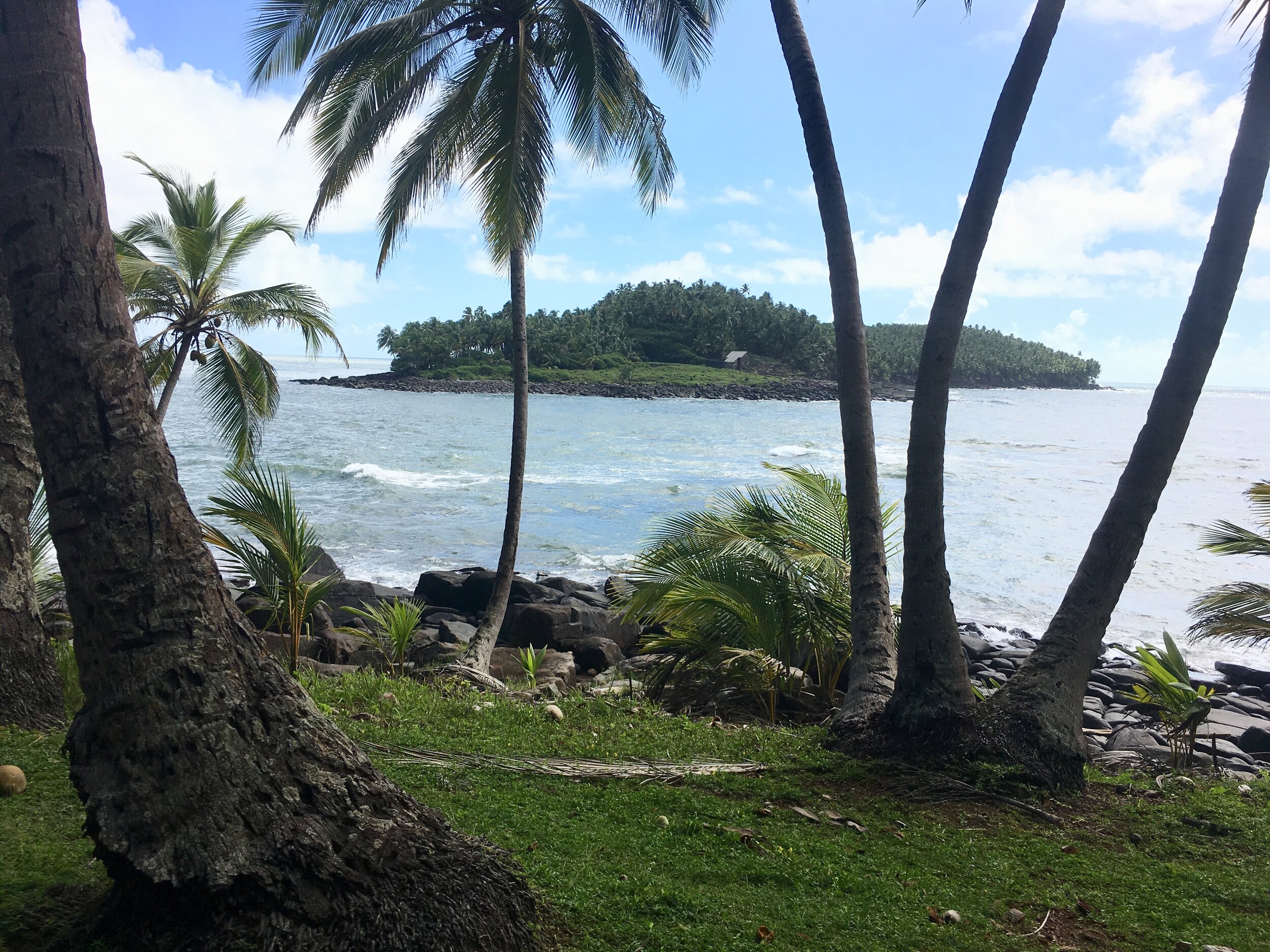
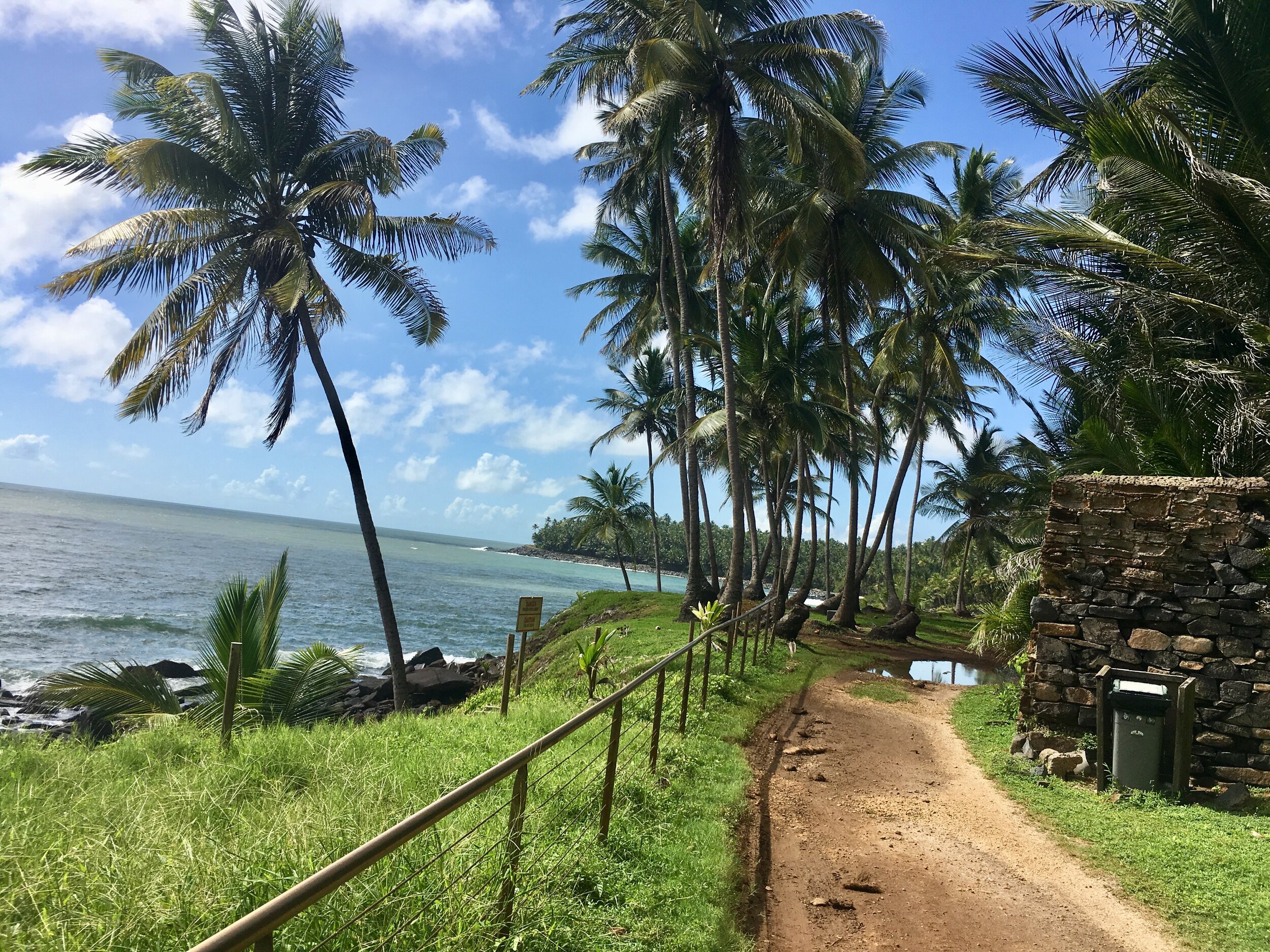

4. Remote Wild Beaches of Sāo Vicente, Cape Verde, Africa
Walk through the streets of Mindelo on the Cape Verde island of São Vicente to find a colorful culture bursting with rhythmic music, vibrant street art, energetic people, buildings painted in a rainbow of colors, dozens of stray dogs adopted by the community, and wild beaches with water as blue as Windex.
Tucked away in the mid-Atlantic Ocean, the 10-island cluster that makes up Cape Verde is located more than 1,000 miles from the northwestern coast of Africa. Cape Verde’s landscape includes inactive volcanoes, miles of dry wasteland, and unbelievably beautiful beaches. The sea water reflects a mixture of every shade of blue and green you’ve ever seen.
Cape Verde (or Cabo Verde) is known for its Creole Portuguese-African culture and traditional lifting and rhythmic morna music. It also has close to perfect weather, rarely shifting up or down from 25-degrees Celsius (77F) at any time of the year, and it hardly ever rains.
The islands were uninhabited until Portuguese and Genoese sailors stumbled upon them in 1456. Many describe the archipelago as the “unspoiled alternative to the Caribbean.” Cape Verde stretches across 1,500 square miles of the Atlantic and contains 10 islands. Barlavento, the winward islands, include Santo Antão, São Vicente, Santa Luzia, São Nicolau, Sal, and Boa Vista. Sotavento, the leeward islands, include Maio, Santiago, Fogo, and Brava.
The beaches on the island of São Vicente are completely wild!! It’s amazing. There are no tall buildings blocking the coastline view. No restaurants. No hotels. No condos. And hardly any people. No lifeguards or flag signals are there to warn you of heavy waves or dangerous wildlife. You swim at your own risk. This is just nature and beauty in its purest form!
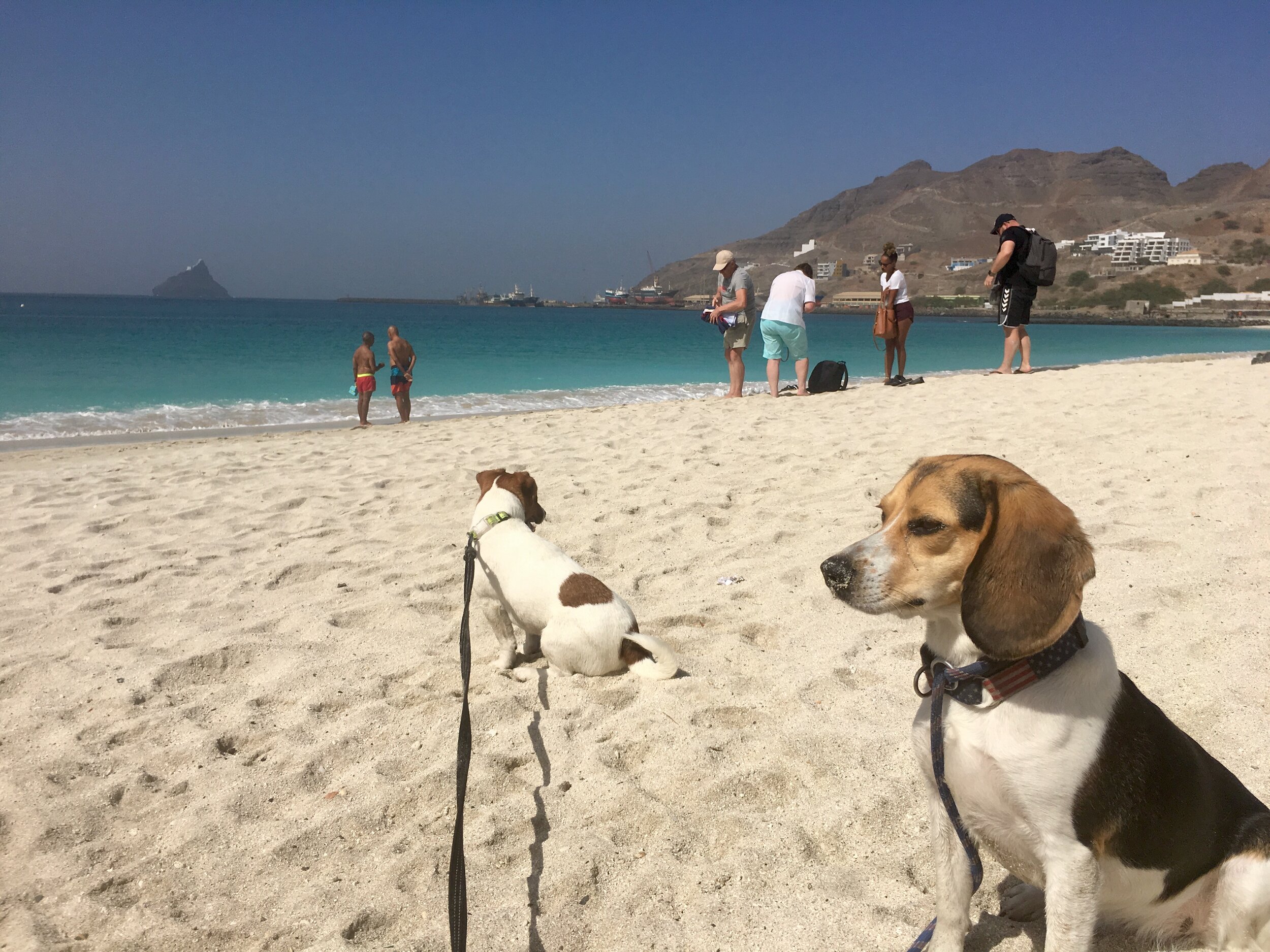
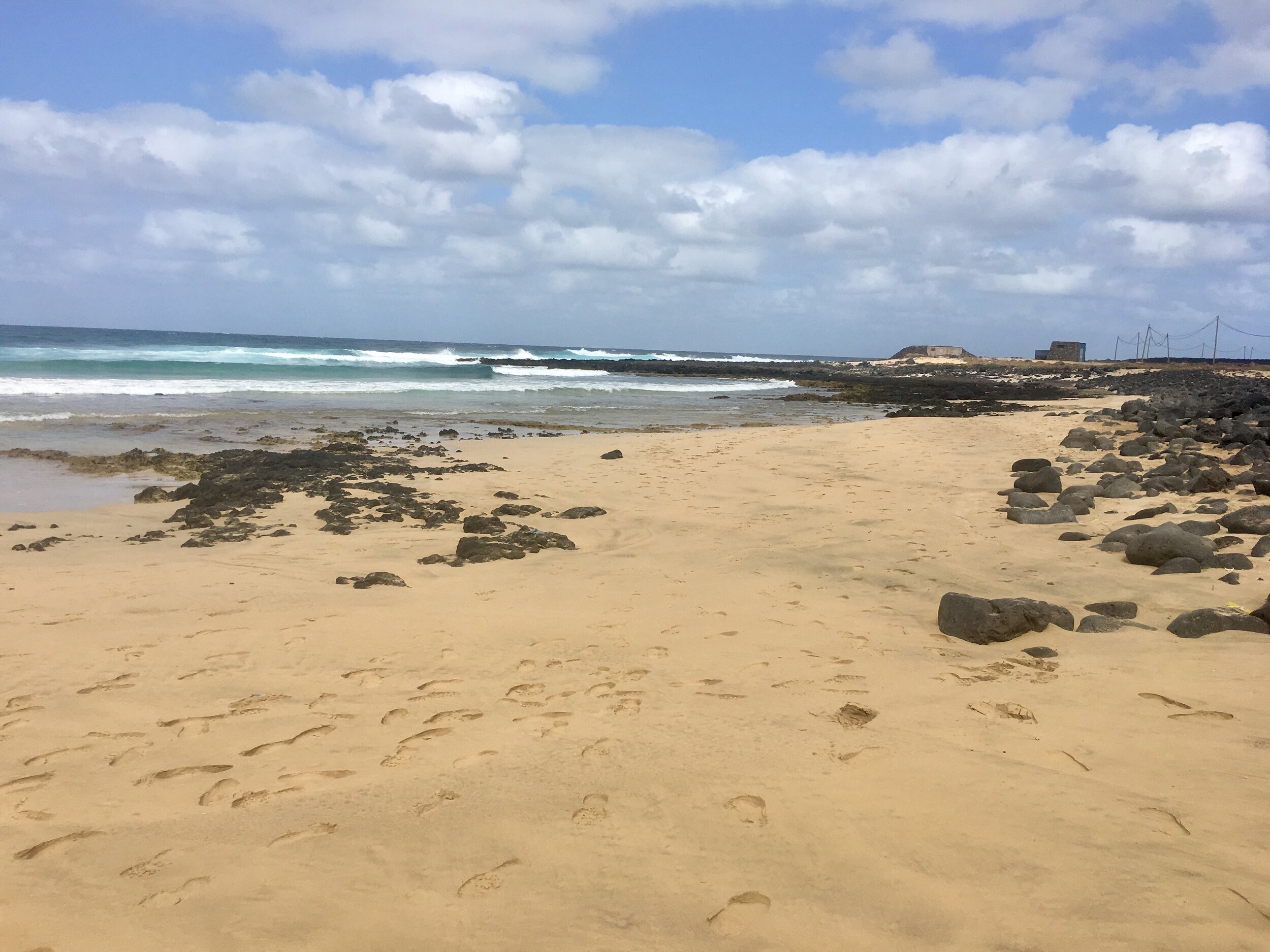
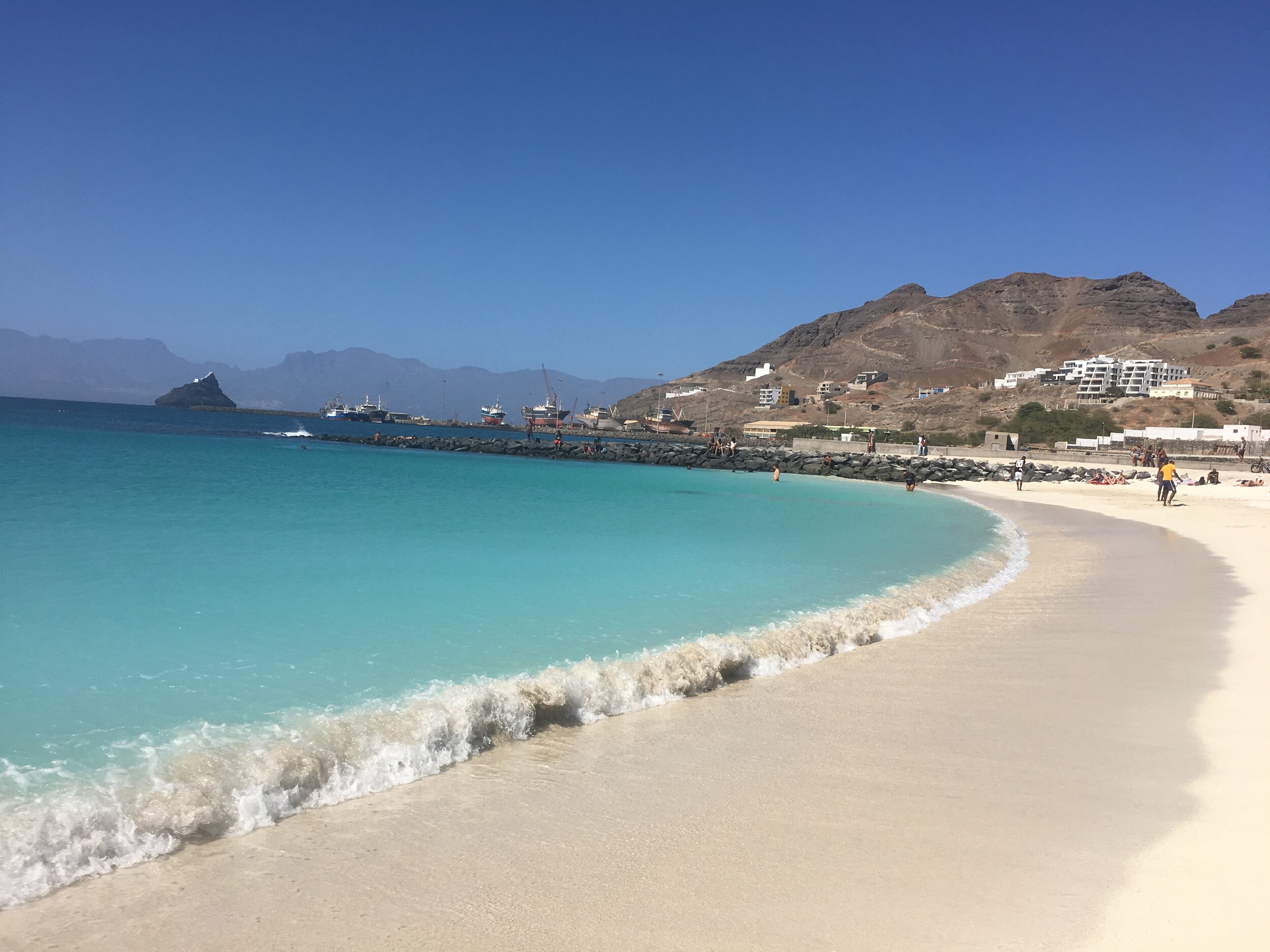
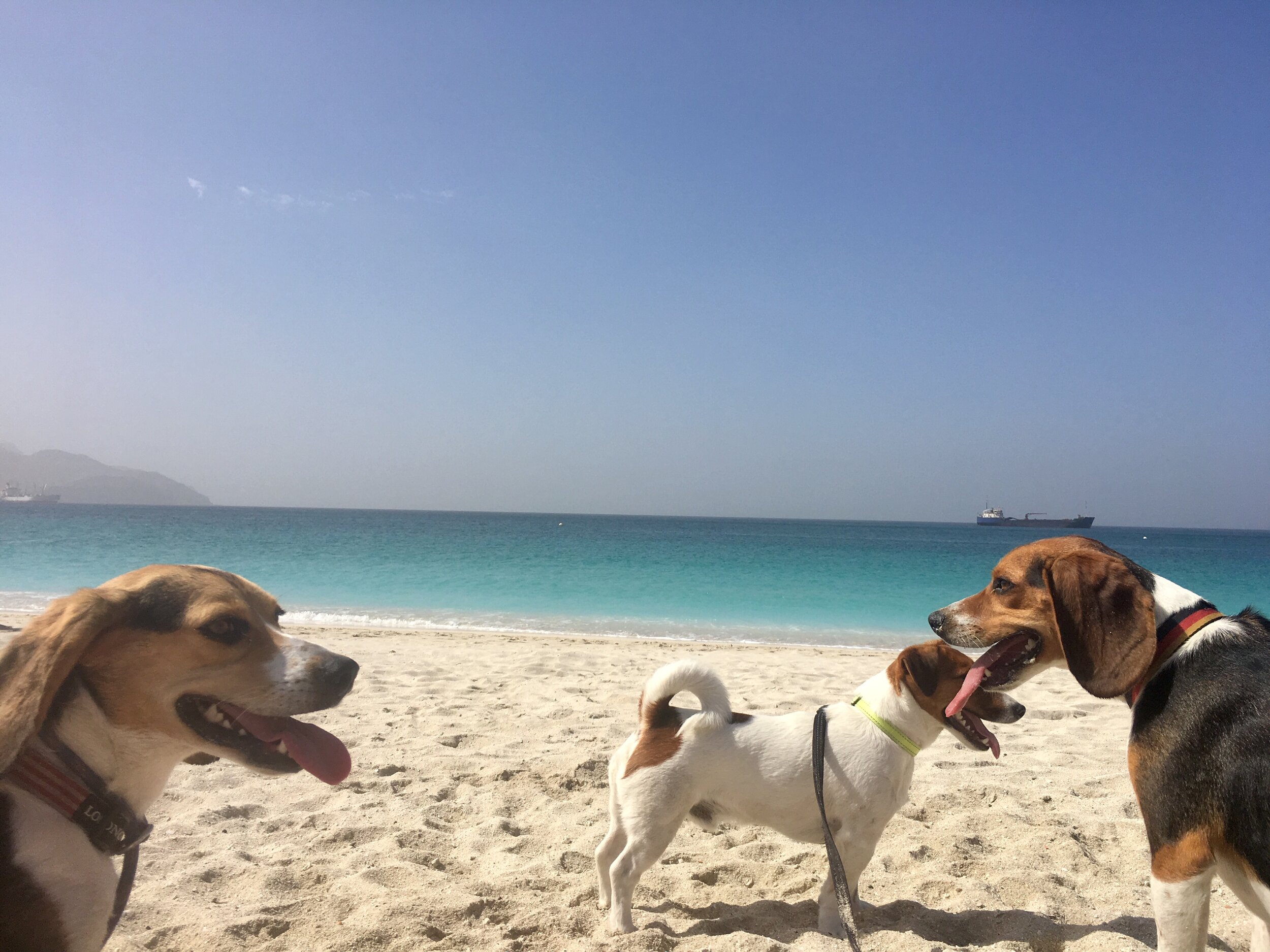
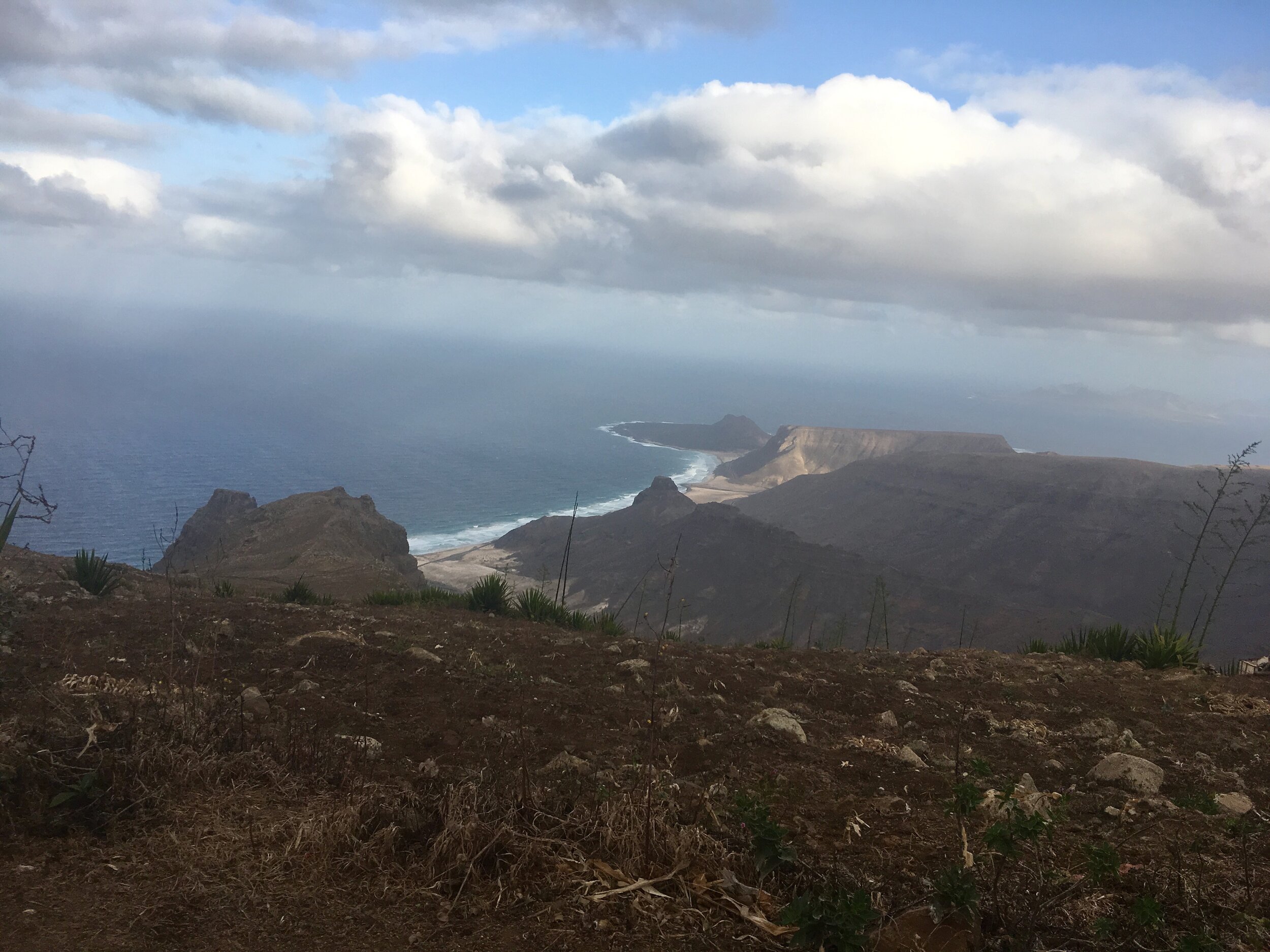
Dog-Friendly Beaches in Cape Verde
I decided to take a short walk to a nearby beach. My beagles, Cap’n Jack and Scout, had made a new friend in the marina with Tulling, an energetic Jack Russel terrier. His humans were not feeling well, so I offered to take all three dogs to the beach.
Tulling loves the water and wanted to jump right in. Cap’n Jack and Scout love to be ON the water, but don’t particularly love to be IN the water and aren’t quite sure about the waves at beaches. I was worried about unleashing three dogs who would likely run off in three different directions. Instead, I kept them all on their leashes. We walked the entire length of the small beach, Praia de Laginha, and then I sat for a while on the sugary white sand and admired the amazing blue and aqua colors of the water while the pups all spent their time digging. That’s right—they all three just dug holes in the sand for a few hours. We had a lot of fun.
It was cool to get a different view of Monte Cara, which we can see every day from the marina. Monte Cara is a mountain in the western part of the island of São Vicente. Its elevation is 490 meters. If you look carefully at the top of the mountain, you can see a human face looking at the sky. This is why it’s called Monte Cara, which means “face mountain.” It is a landmark in the city of Mindelo.
We rented a car and drove all around the island of São Vicente. We first drove to Praia Salamansa and enjoyed spectacular views of the surrounding mountains, crystally-dynamic blue waters, and pounding waves while several local kite surfers put on a show for us! As the hounds were enjoying their unleased time, we launched the drone and got some amazing footage from high above us.
As we were filming, a young local boy from the nearby rural village approached us, curious about the drone. He was probably about 12 years old and didn’t speak English, but we were able to find a way to communicate. It was obvious that the boy was fascinated seeing his home town from a completely different view. We are fairly certain he had never seen a drone before, and it’s possible he had never seen a video camera of any kind.
Soon, about 10 other kids came running toward us as we were landing the drone. The boy told them of the flying camera and they all became wide-eyed and looked to us to show them the magic machine. Unfortunately, the battery needed to be charged so we couldn’t launch it again for the new spectators. One of the kids had a small tray of seashells he had gathered from the beach. He had used the shells to make trinkets to sell. I bought a small turtle he created from the shells and a shell bracelet. Total price – 5 euros, which is probably more money than he had ever seen at one time before.
We set out to explore more of the island. We found a huge wasteland with a giant mountain sitting virtually in the middle of nowhere and decided to launch the drone again. We were amazed to discover that the mountain was actually a volcano that had been inactive for millions of years. Volcano Viana is not the most well-known volcano. It is not very notorious and does not spit lava, or smoke. It is small and off the beaten path. But it’s just breathtaking. WATCH THE VIDEO.
From there, we drove to Praia de Sarangaca, another totally wild an uninhabited beach with spectacular views and even more brilliant shades of blue!
We then decided to drive to the top of Monte Verde and see the island from its highest peak. We could see many of the surrounding islands and noticed the overall dryness of the island. In many places it’s desert-like with mostly sand, rocks, and mud. There is not much grass anywhere and not much natural vegetation. But the beaches that surround the entire island highlight the amazing azure waters of the Atlantic.
The next day we decided to go to the other side of the island to the beach at São Pedro. This beach once again had vibrant blue water. It also had gorgeous golden-blackish sand and was surrounded by another small village with buildings as colorful as a Crayola box. The wooden boats that lined the shore were also painted in a multitude of bright colors.
We were welcomed by about 10 stray dogs who seemed to be a built-in alarm system for the village. Cap’n Jack and Scout joined in the bark fest as we made our way to the water.
We took a bus to São Pedro and put on our diving gear and swam in the warm water in search of Tortuga—local loggerhead turtles that swim in the wild in this area. We found these beautiful playful creatures and swam and played with them for hours. It was a remarkable experience. They were so friendly and swam right up to us. WATCH THE VIDEO
It was the perfect way to end our three weeks in this vibrant place full of wildlife, spectacular scenery, and colorful people.
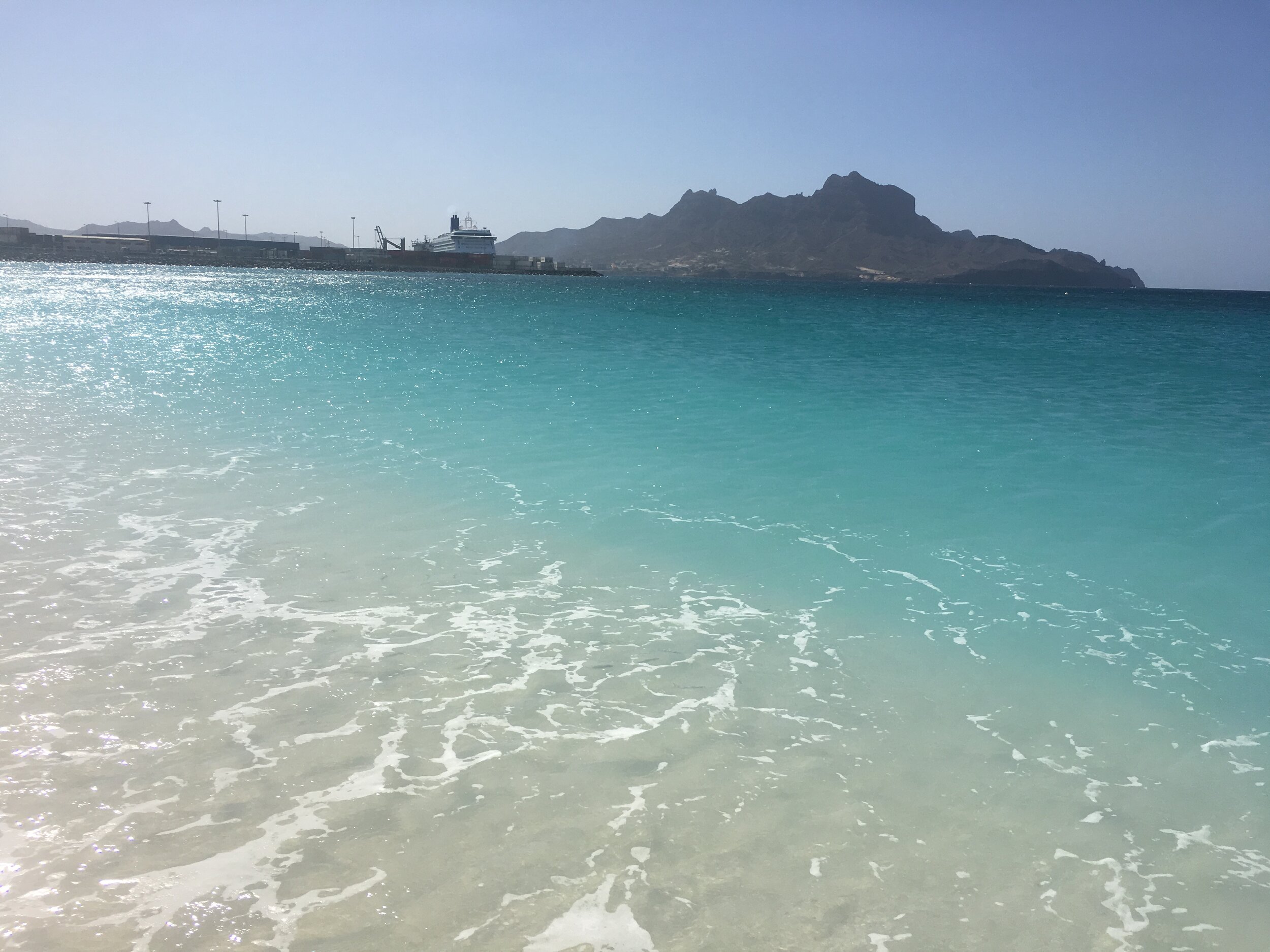
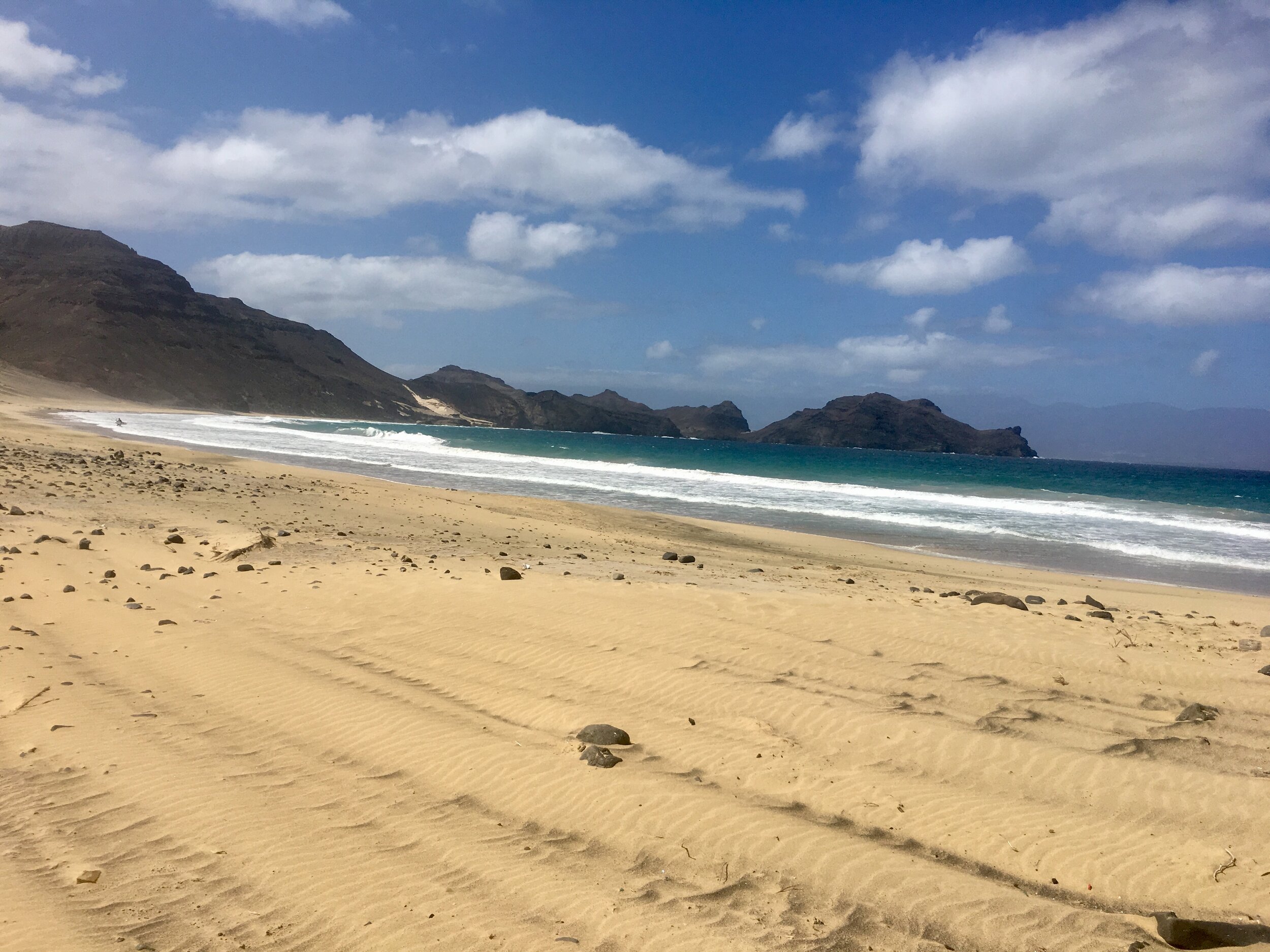
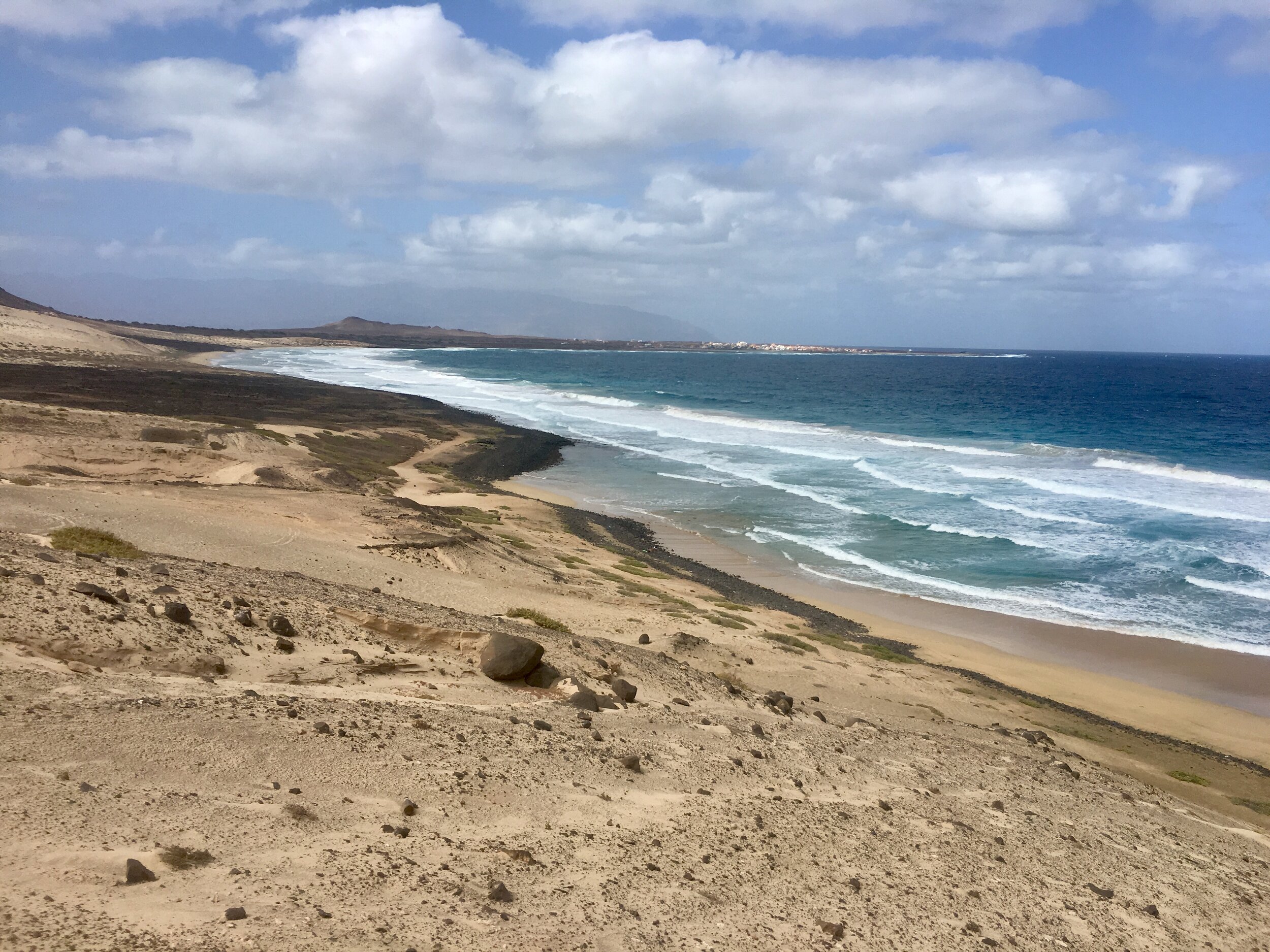
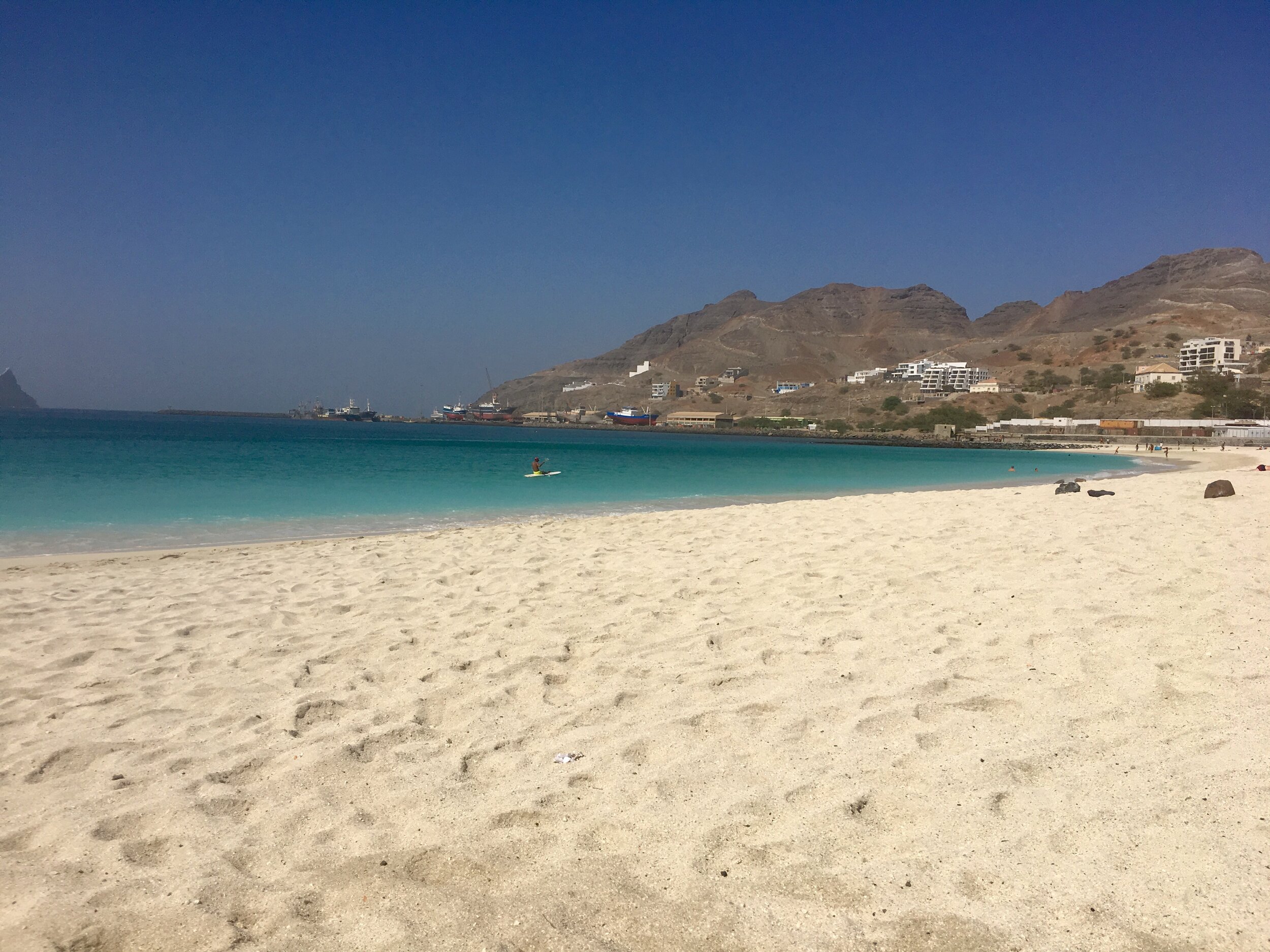
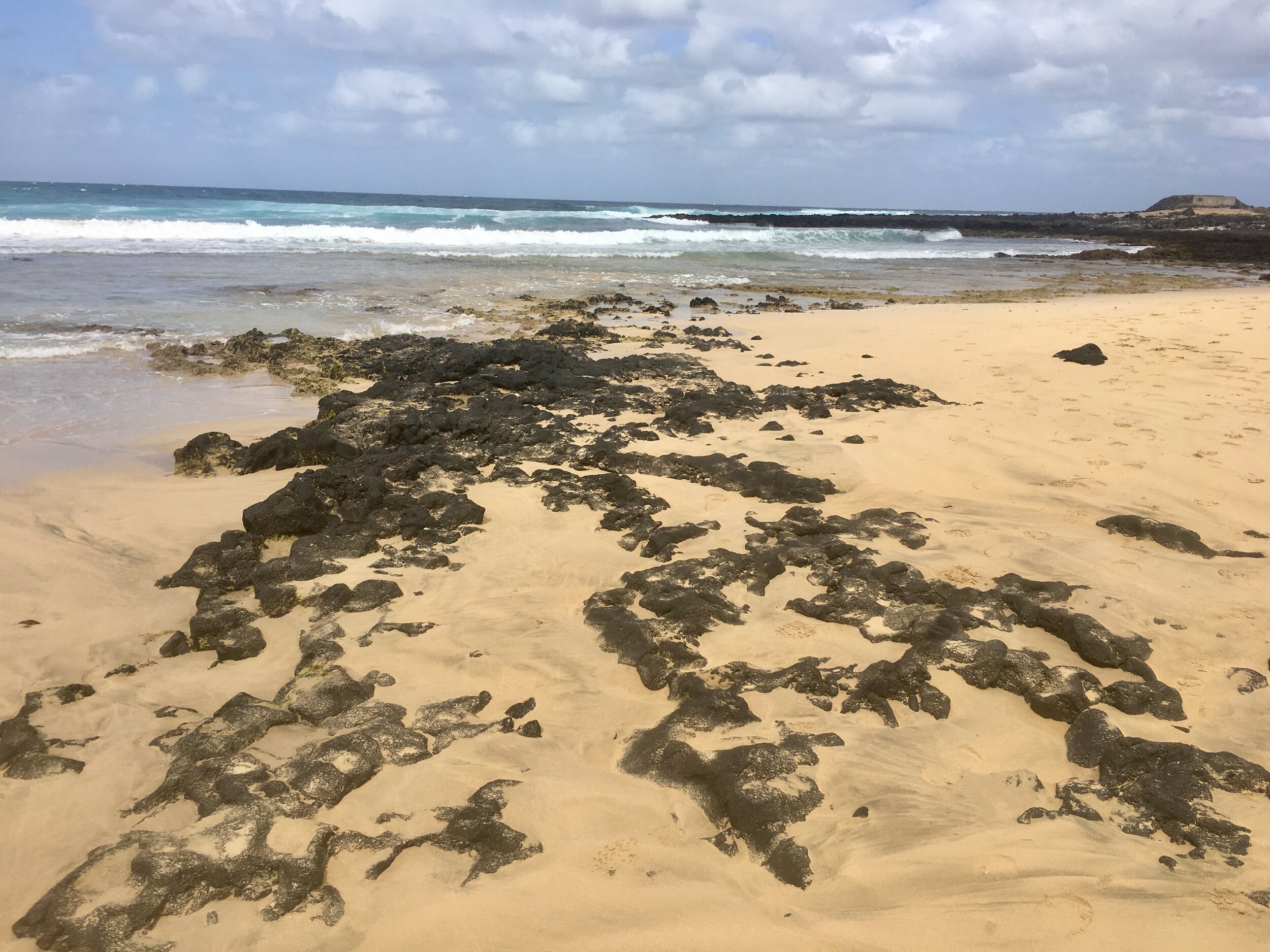
5. St.-Valéry-en-Caux — A Remote, Unique Beach on the Northern French Coastline in the English Channel
One of the hidden gems along the English Channel on the northern French Coastline is the little town Saint-Valery-en-Caux, embedded between the impressive white cliffs on the channel’s South-Eastern coast.
But before you can enter this beautiful place from the sea, careful navigation is mandatory. The pre-harbor falls dry 3 m and harbor entry is only possible HW +/- 2 hrs. Passing a draw bridge and a massive sea gate you will find a most charming marina right in the city center.
Situated in Northern France, 32 kms from Dieppe, St. Valery en Caux sure is a highlight on the Normandy Alabaster Coast. Charming alleys, traditional (seafood) restaurants and historic buildings gives you a great taste of small-town Normandy.
Memorials remember of the time when this part of the world was less peaceful but also of the achievements of the great French pilot pioneer Dieudonné Costes flying non-stop from Paris to New York in 1930.
I unleashed the hounds for a couple hours on the gorgeous beach which had virtually no sand. It was mostly rocks and at low tide was actually the bottom of the sea. Where the gorgeous hard-to-identify green-colored water once filled the channel, it was now just the dirt and rocks that make up the ocean’s floor.
On the beach, Cap’n Jack and Scout ran and played each of the 11 days we were in port at St.-Valéry-en-Caux. It was so cool to see what is generally hidden by water as the low-tide shore was dry with only rocks, coral, seaweed and tons of crabs and other crustaceans scampering about. We were wondering what kinds of sea life could survive in these conditions—six hours wet and six hours dry. The pups were literally playing on the bottom of the sea.
I continue to marvel at the gorgeous green color of the water—a color I still can’t quite describe, but I know I will never forget it. I often wonder if I will ever see that color green again, and am now convinced that I will not.
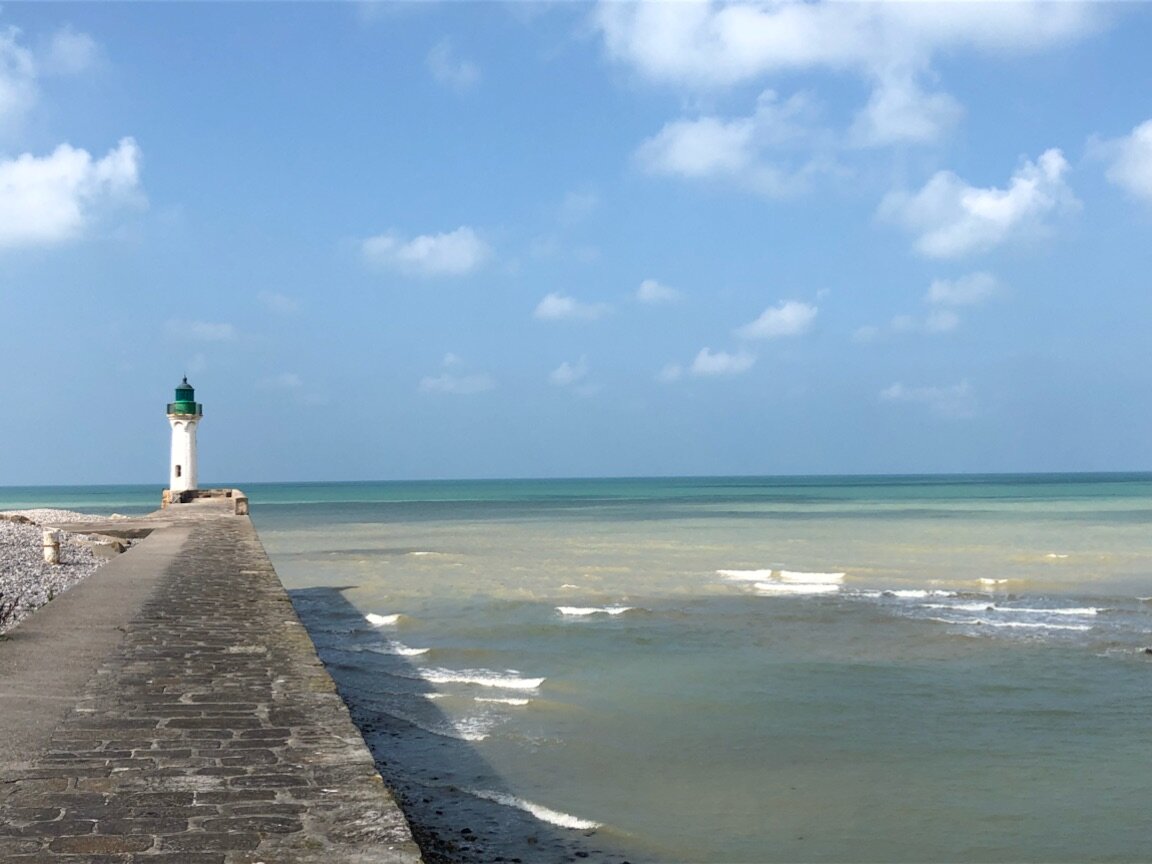
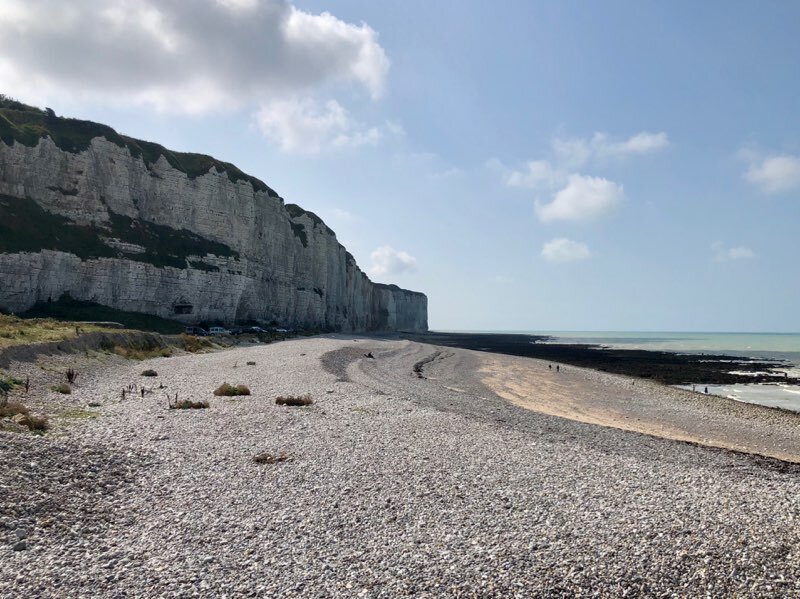
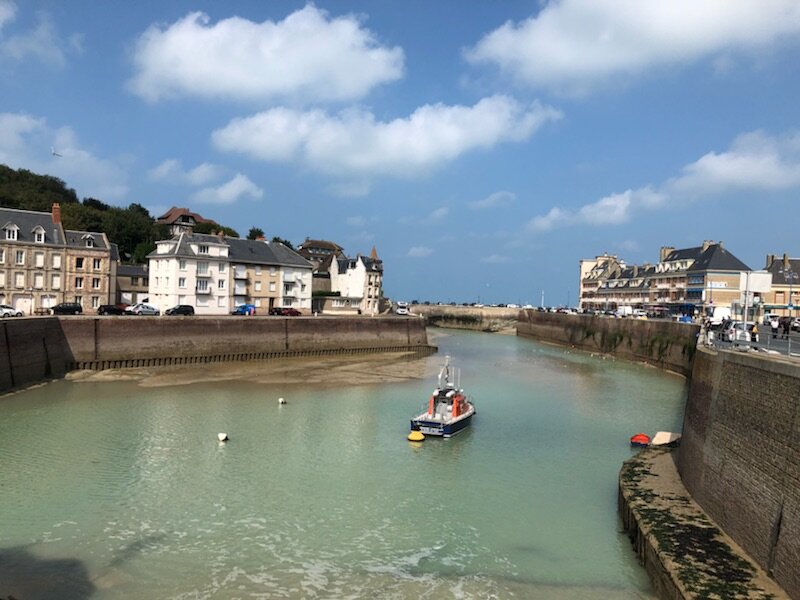
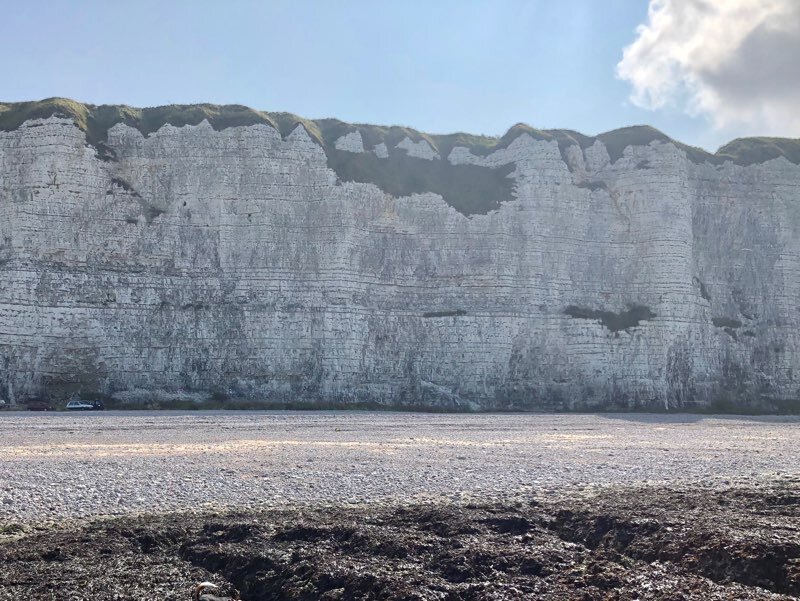
6 — Camaret sur Mer — A Beautiful, Remote Beach on the Brittany Coast in Northern France
Best viewed from high atop Pointe de Pen-Hir on the mountain’s edge, one of the tallest cliffs on the Brittany coast. This old French province features some of the Atlantic’s most fantastic beaches seen from high sea cliffs.
In parts of Pen Hir there is a bird preserve so some areas are off limits at certain times. The stacks are known as Tas de Pois (heaps of peas). In the language of Wales, Pen can mean summit or head.
Beaches like this in a wild Atlantic setting – vast, bracing, beautiful – are what Brittany does best. Heather-clad cliffs plunge toward secret coves, and blue hydrangeas line a spectacular walk along the cliff’s edge.
The sweet fishing town pf Camaret sur Mer is situated in the very Northwest of France, at the Avant-Goulet de Brest in beautiful and wild Brittany.
A popular starting port for a sail across the dreaded Bay of Biscay into A Caruña, Spain, Camaret’s exposed location at the end of Crozon Peninsula has been of great military relevance for many centuries to defend the Goulet de Brest, the entrance to France’s largest naval base. You will find remains of fortifications, batteries, and bomb craters from a range of eras.
From Camaret sur Mer’s sea wall, the Atlantic looks heavenly and calm and in the early evening sun the walls of the Chapelle Notre-Dame de Rocamadour, at the end of the jetty, sparkle and glow. Inside, wooden boats and life belts hang from the ceiling beams, tokens of thanks from mariners who survived perilous Atlantic crossings.
In front of the church, a fishing vessel graveyard reminds us of a time when sardine fishing rather than tourism was the main source of income in this small village.

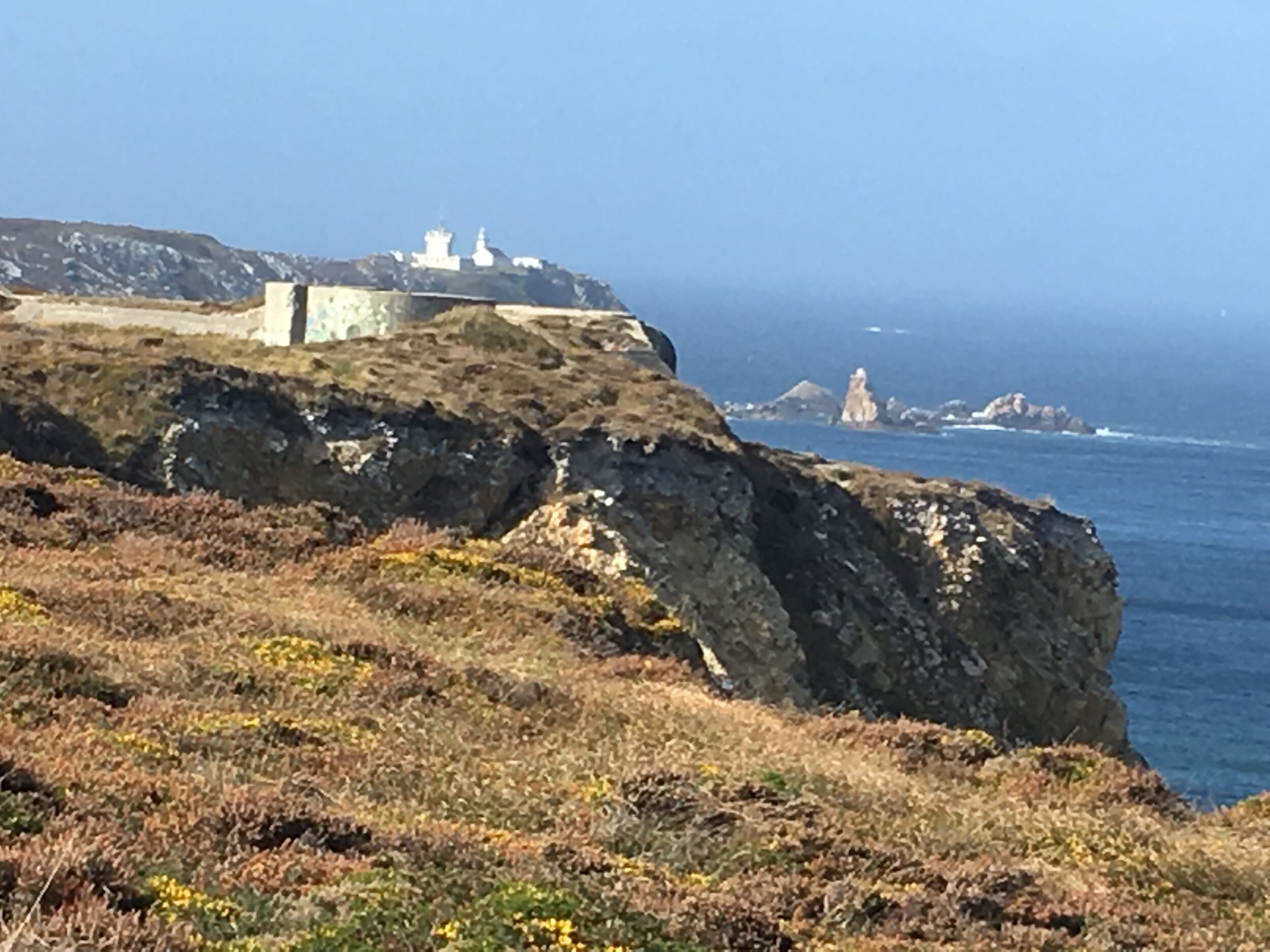
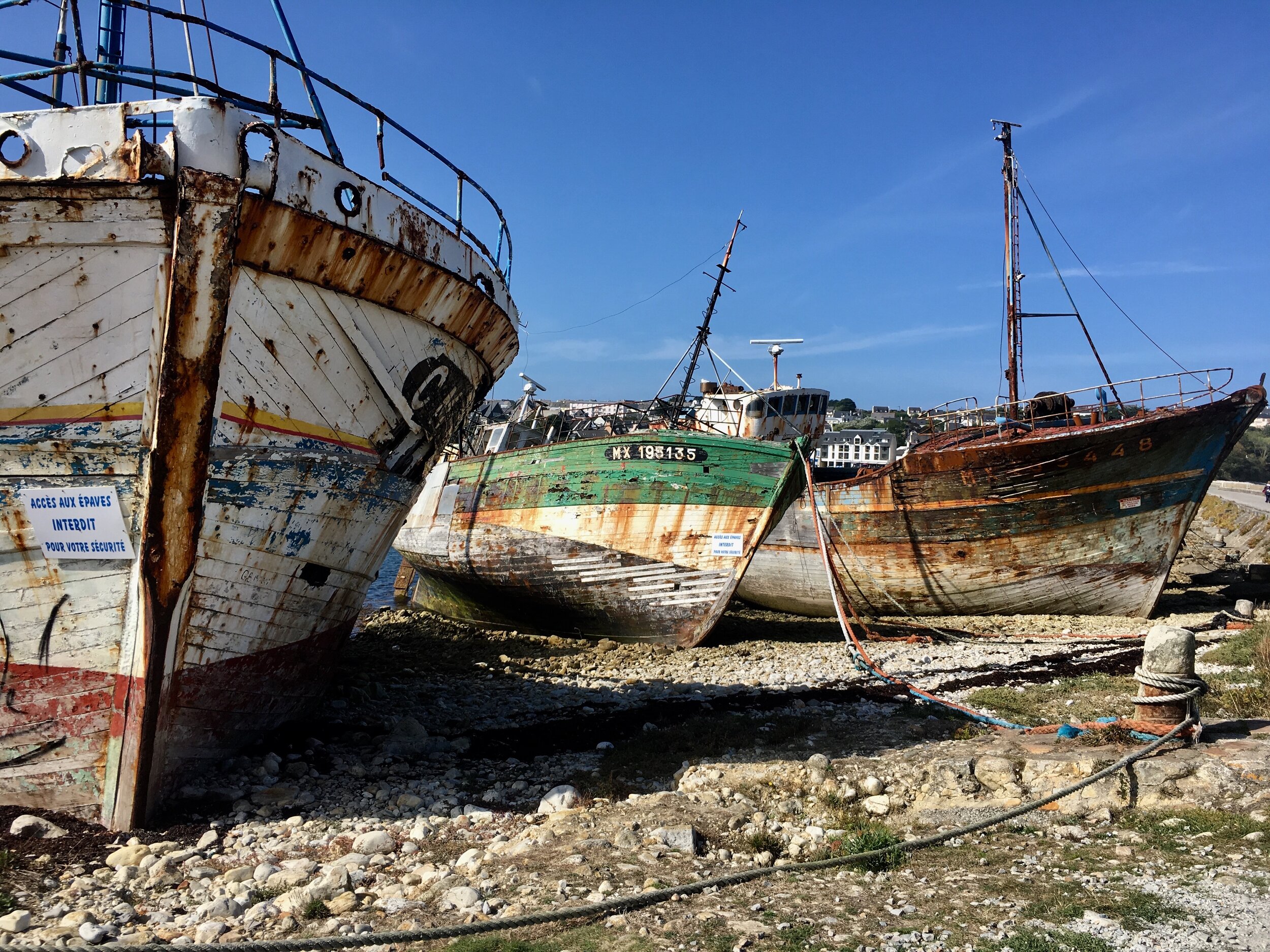
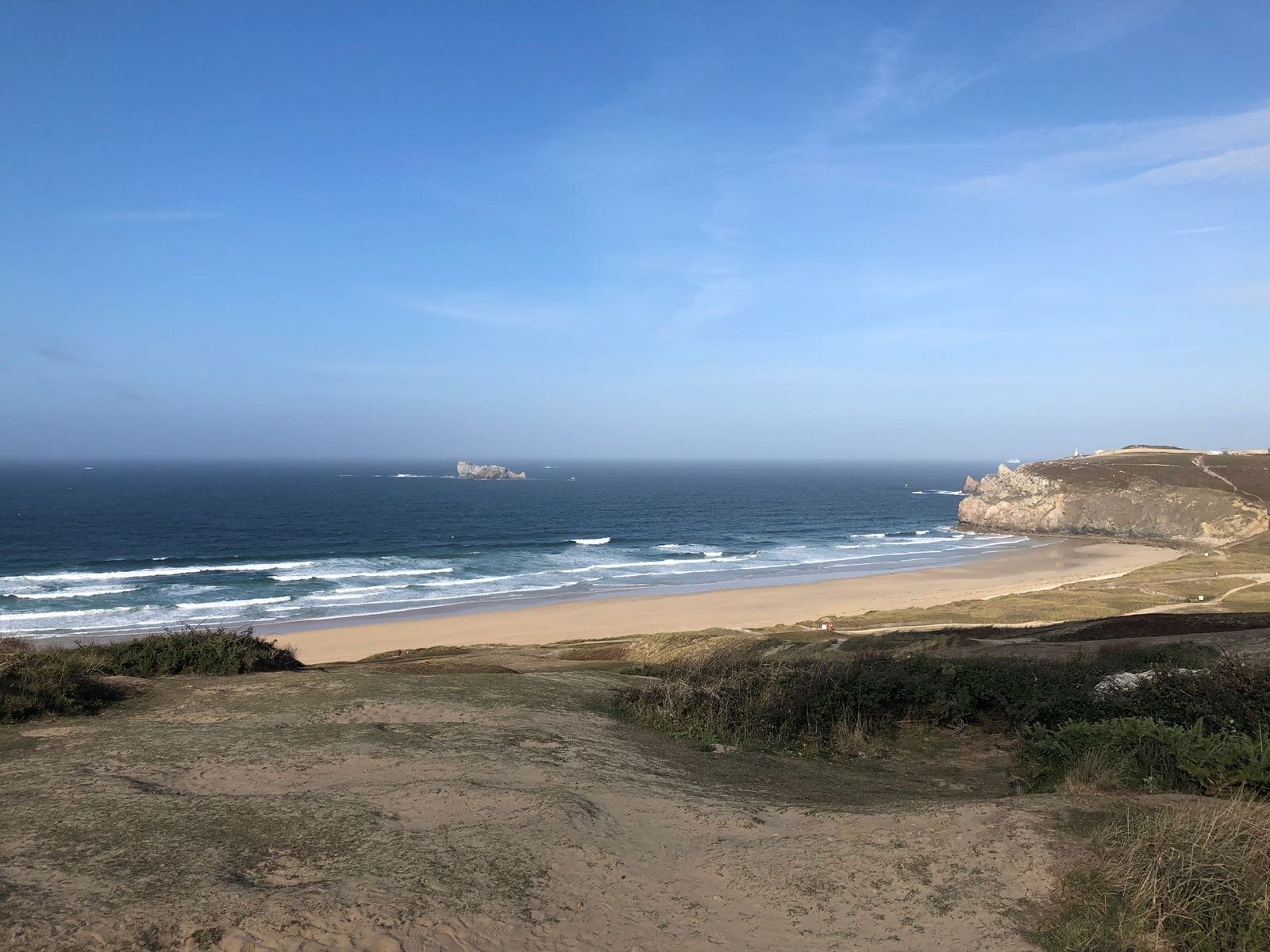
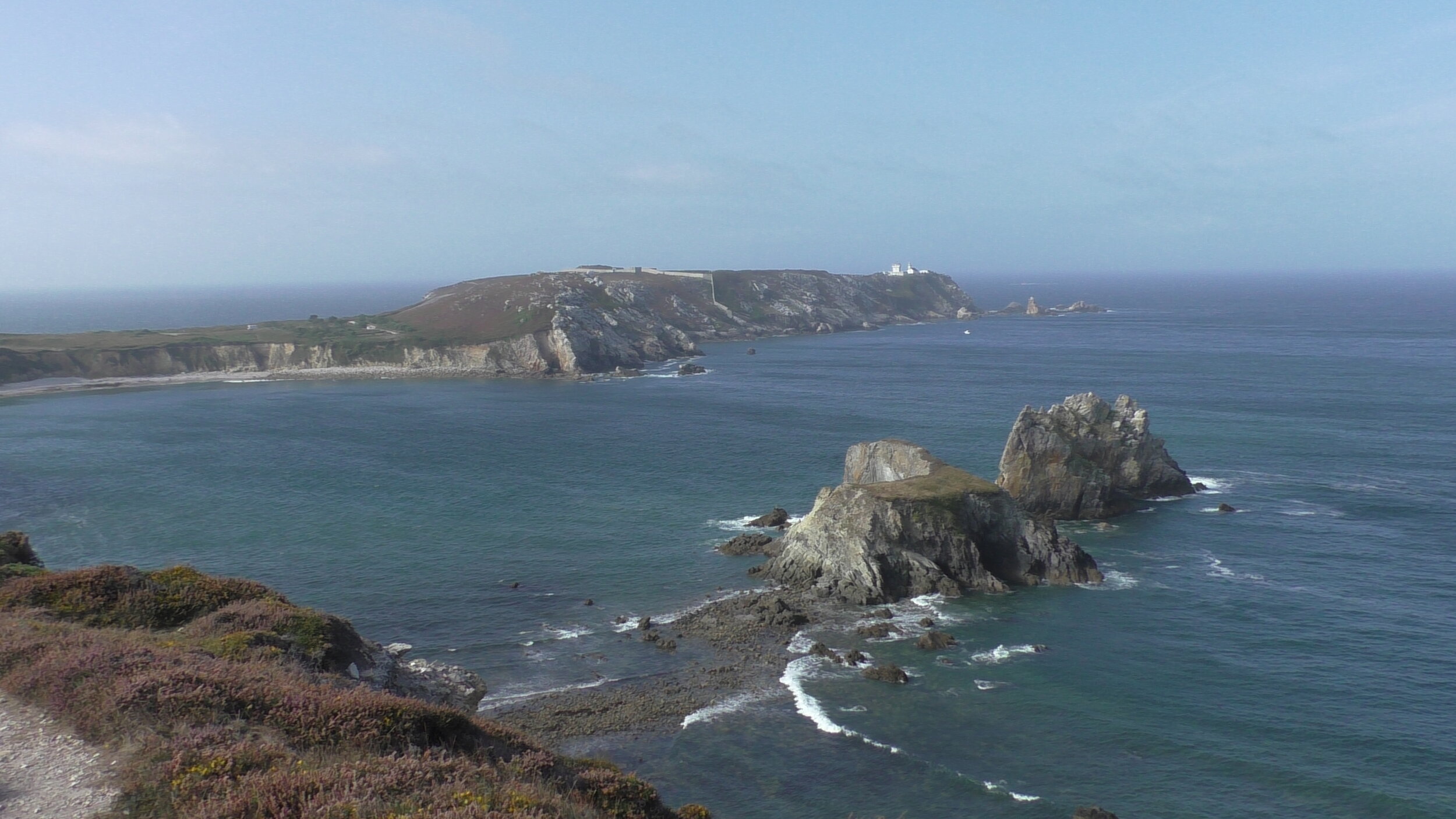
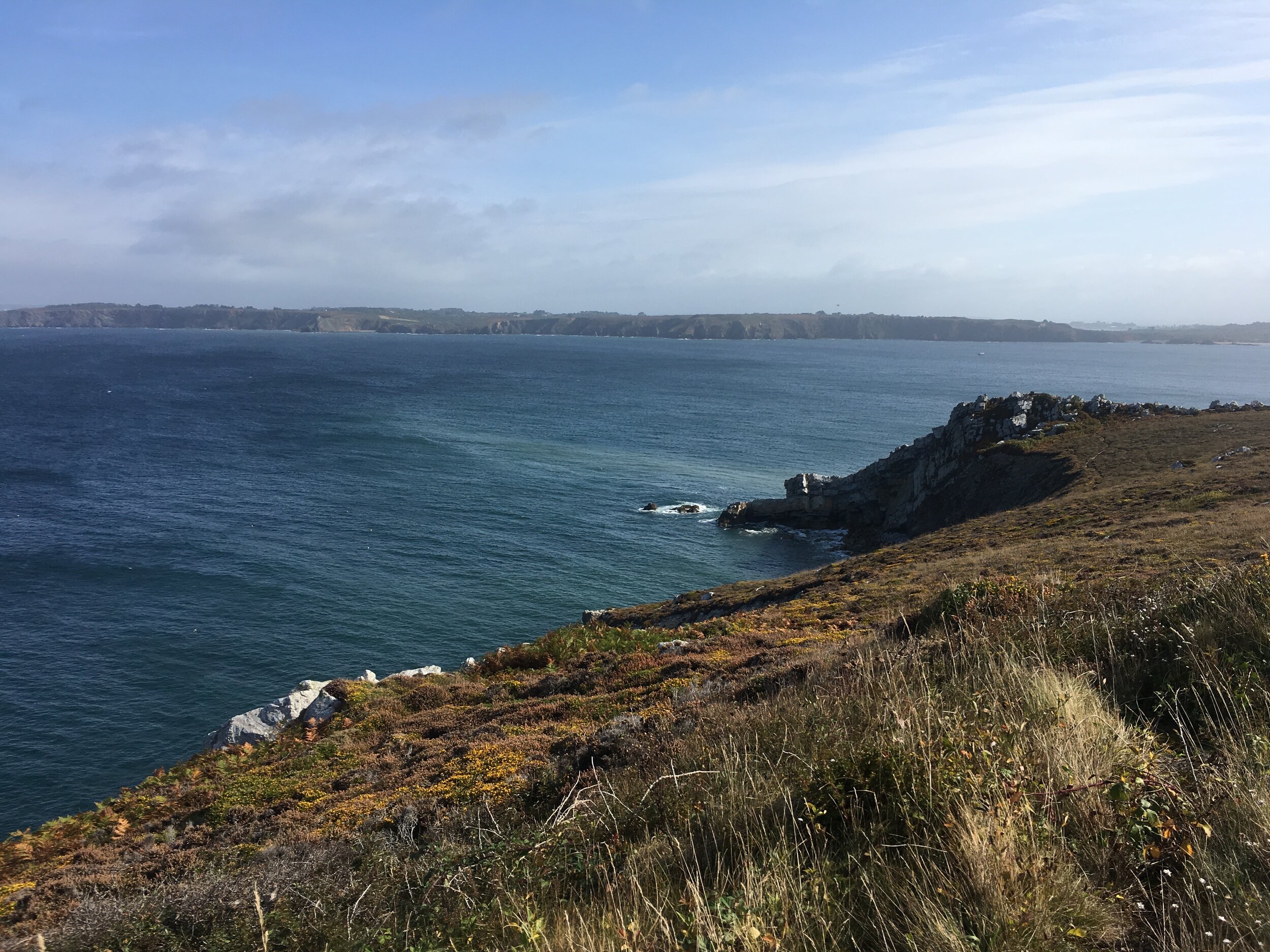
7. Reynisfjara — A Beautiful, Unique, Black Beach in Iceland
Reynisfjara is a world-famous black-sand beach found on the South Coast of Iceland, just beside the small fishing village of Vík í Mýrdal. It is the Atlantic twin of the Pacific black sand beaches of Hawaii.
With its enormous basalt stacks, roaring Atlantic waves and stunning panoramas, Reynisfjara is widely considered to be the most beautiful example of Iceland’s black sand beaches. In 1991, National Geographic voted Reynisfjara as one of the Top 10 non-tropical beaches to visit on the planet.
Reynisfjara is an amazing remote beach in iceland
Reynisfjara is found around 180 kilometers (112 miles, about two and half hours drive) from Iceland’s capital city, Reykjavík, and is a popular stop for those taking a sightseeing tour along the popular South Coast.
Upon visiting the beach, travelers will immediately observe rocky sea stacks sitting off the shoreline, known as Reynisdrangar. According to local Icelandic folklore, these large basalt columns were once trolls trying to pull ships from the ocean to shore. However, these trolls were dim and went out too late in the night. Dawn broke on the horizon, turning the trolls into solid stone.
Another legend tells of a husband whose wife was kidnapped and killed by two trolls. The man followed the trolls down to Reynisfjara where he froze them, ensuring that they would never kill again. You may remember these amazing formations that were featured in Season 7 of the HBO series, “Game of Thrones.”
The sea stacks themselves are home to thousands of nesting seabirds. Species that can be found here include puffins, fulmars and guillemots, making it a must-see location for all birdwatchers.
Reynisfjara beach is located conveniently in the middle of the South Coast, adjacent to the village of Vík. We saw it while driving along Ring Road on the way to the Jökulsárlón glacier lagoon.
Visitors to Reynisfjara should be aware of the rolling, roaring waves of Reynisfjara, which are particularly violent, often pushing far further up the beach than many would expect. These are called sneaker-waves, and they can appear when least expected, even on incredibly still days. There are no significant landmasses in between Antarctica and the shores of Reynisfjara, meaning waves have thousands of kilometers to build.Visitors are advised to never turn their back on the waves, and keep a safe distance of at least 30 meters (98 feet).
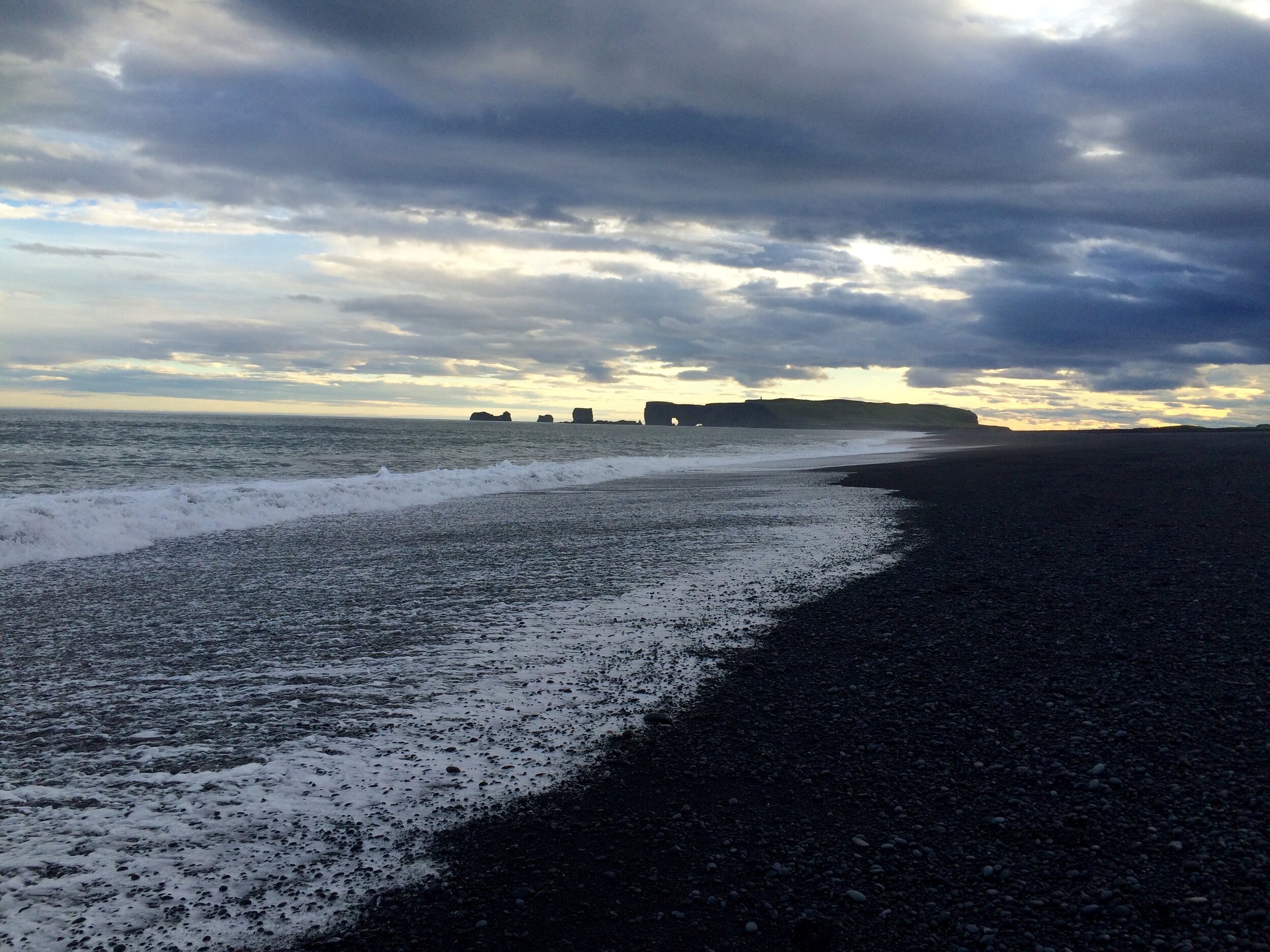
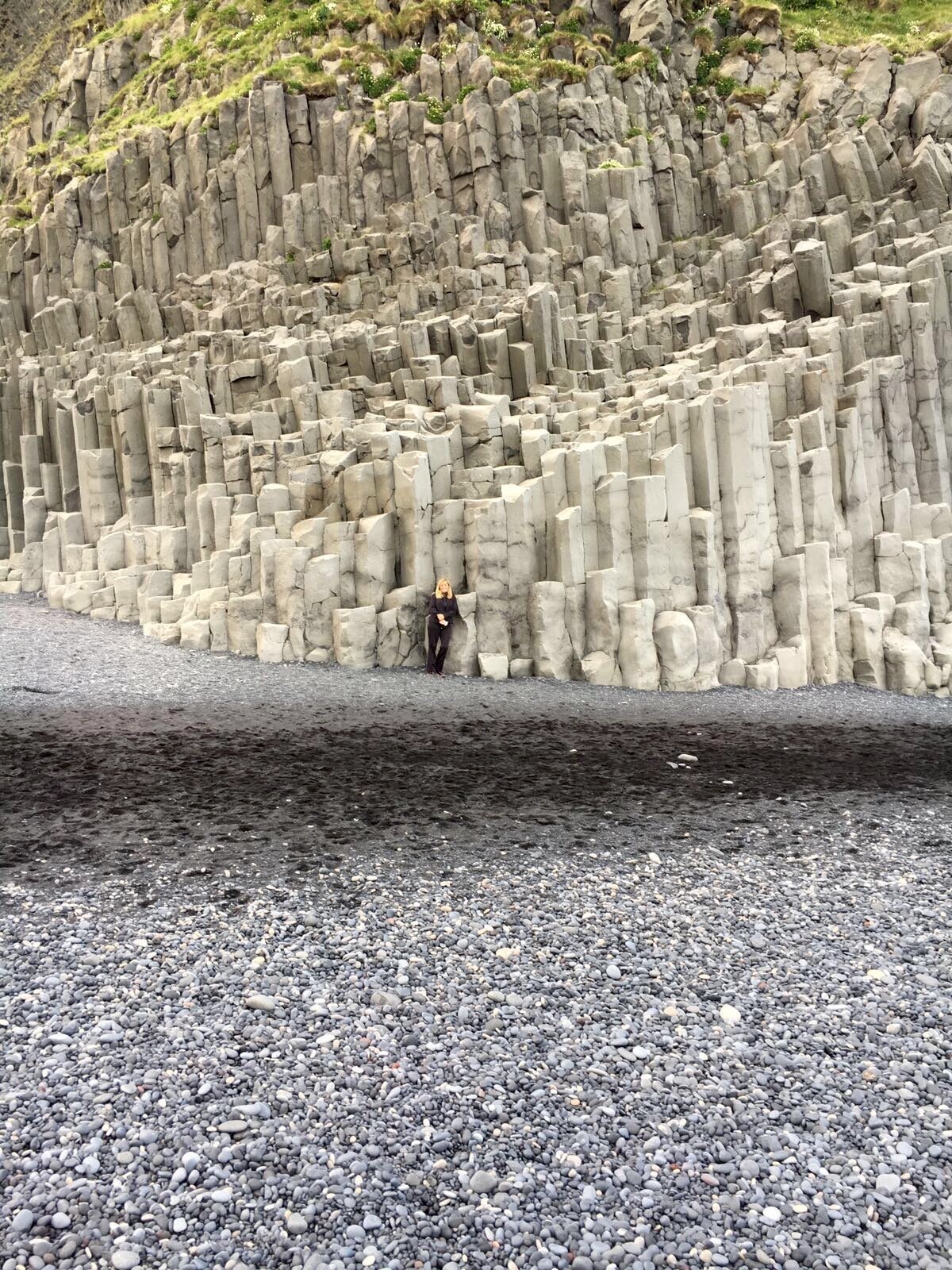
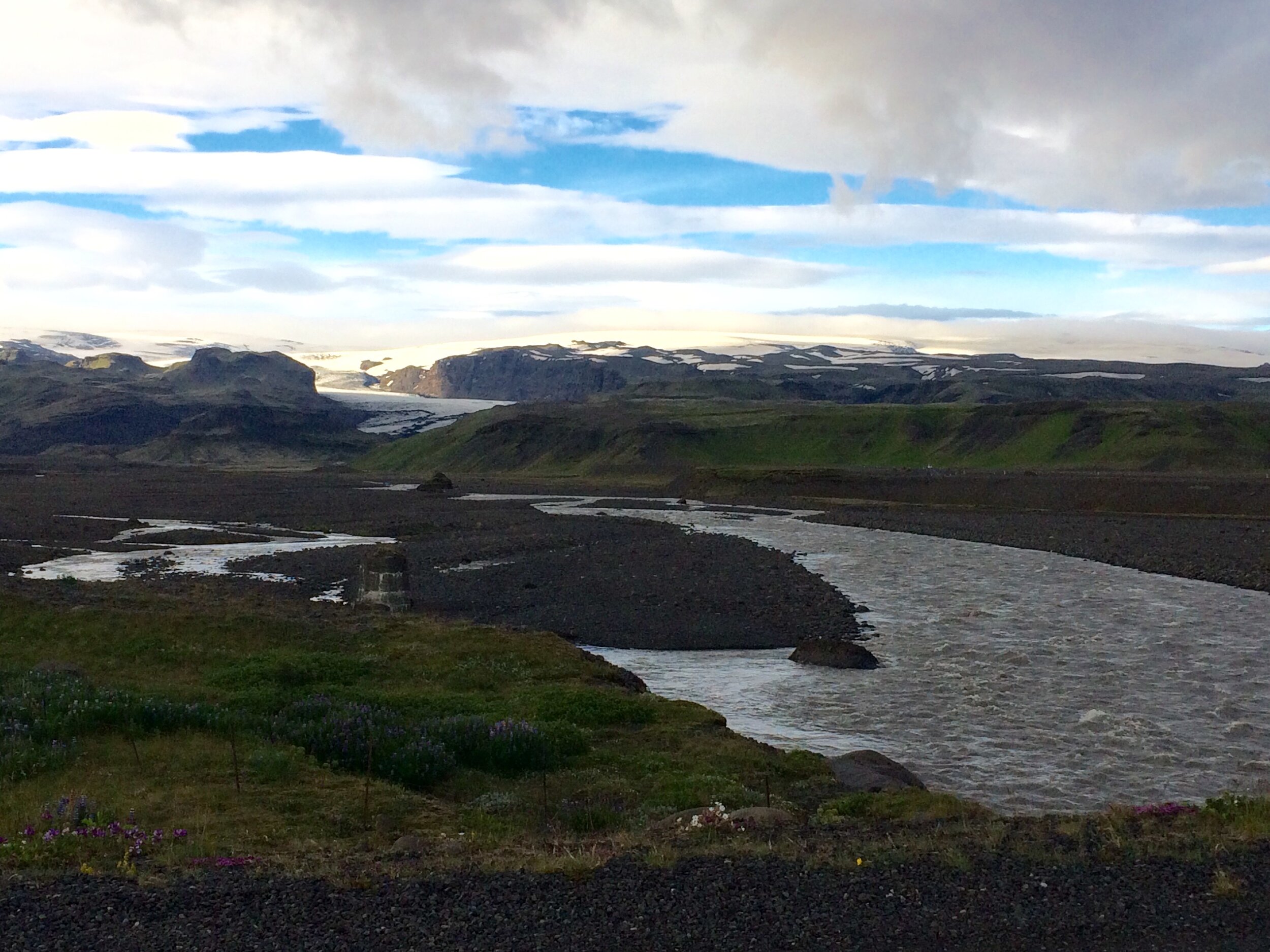
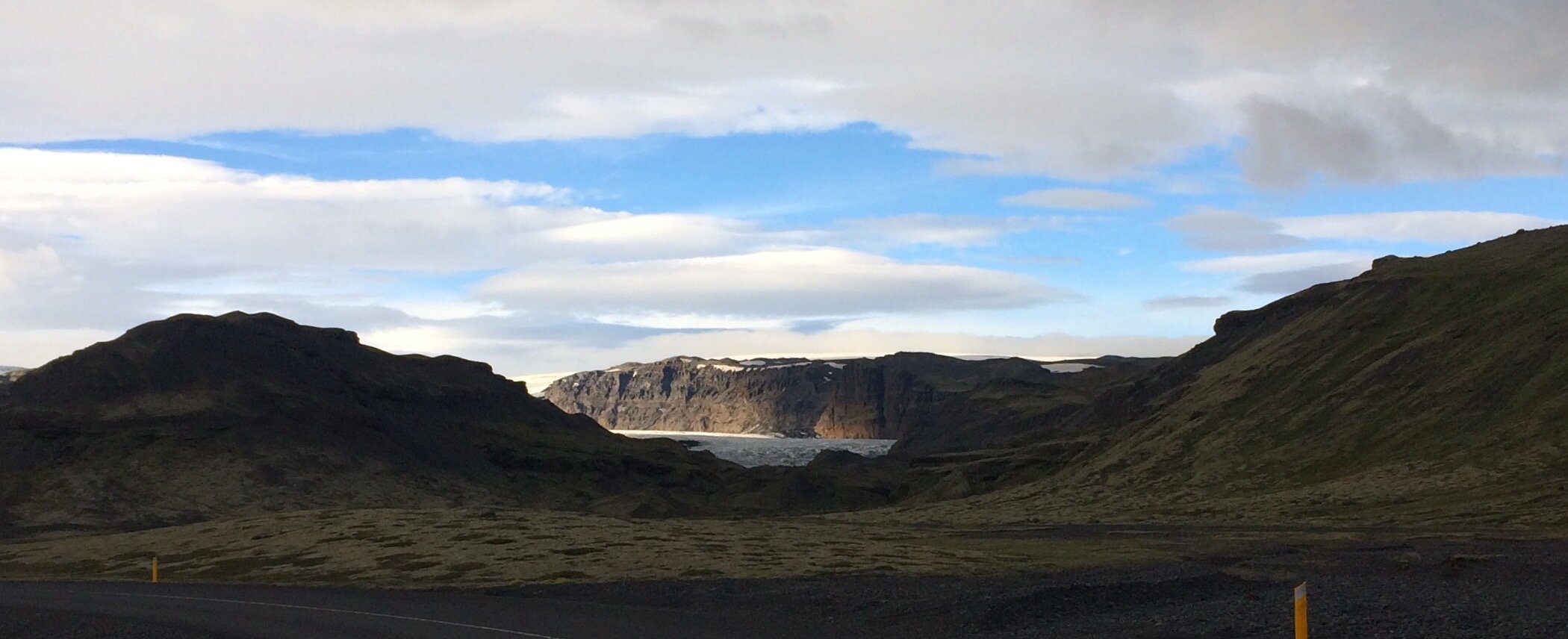
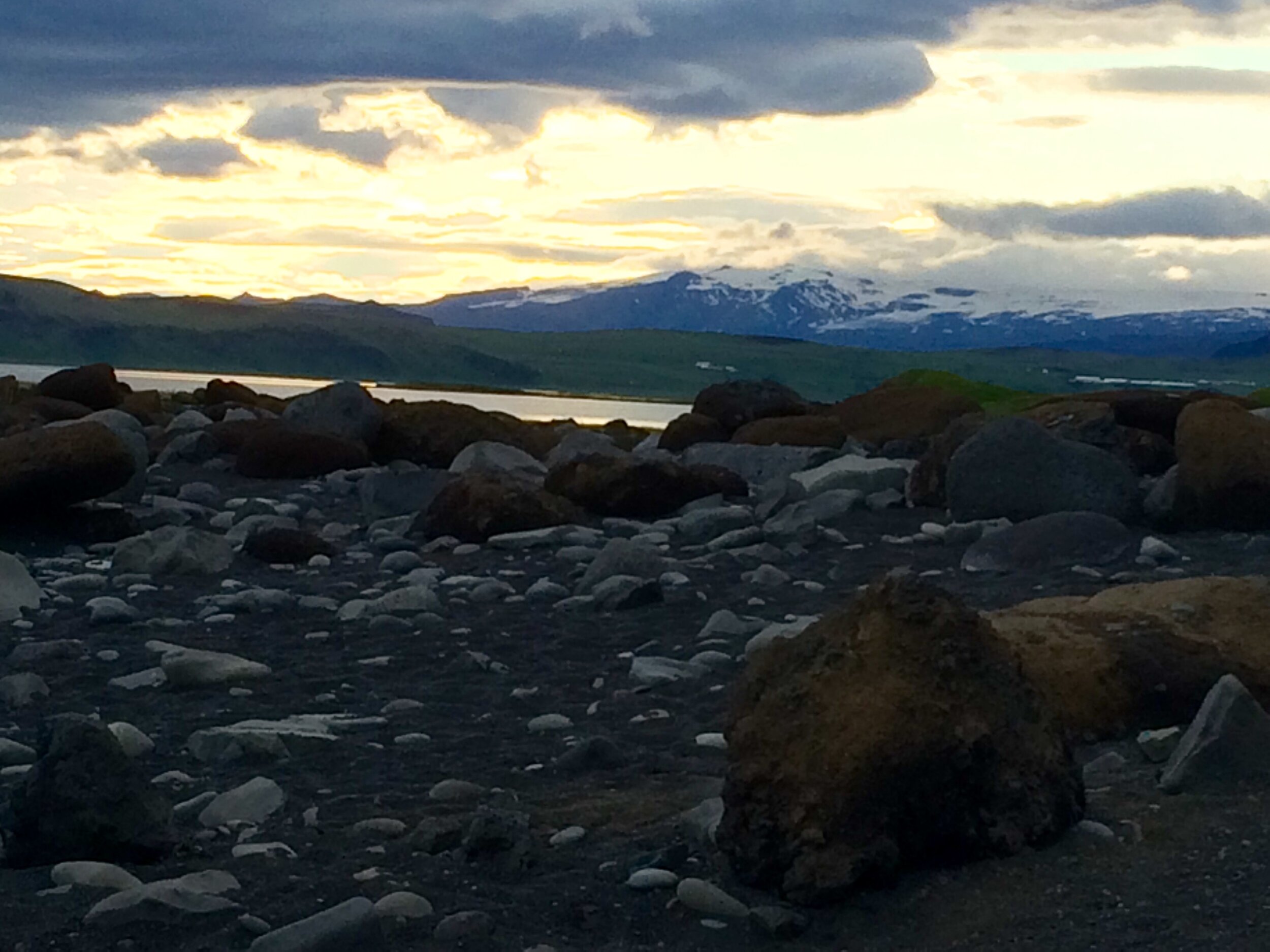
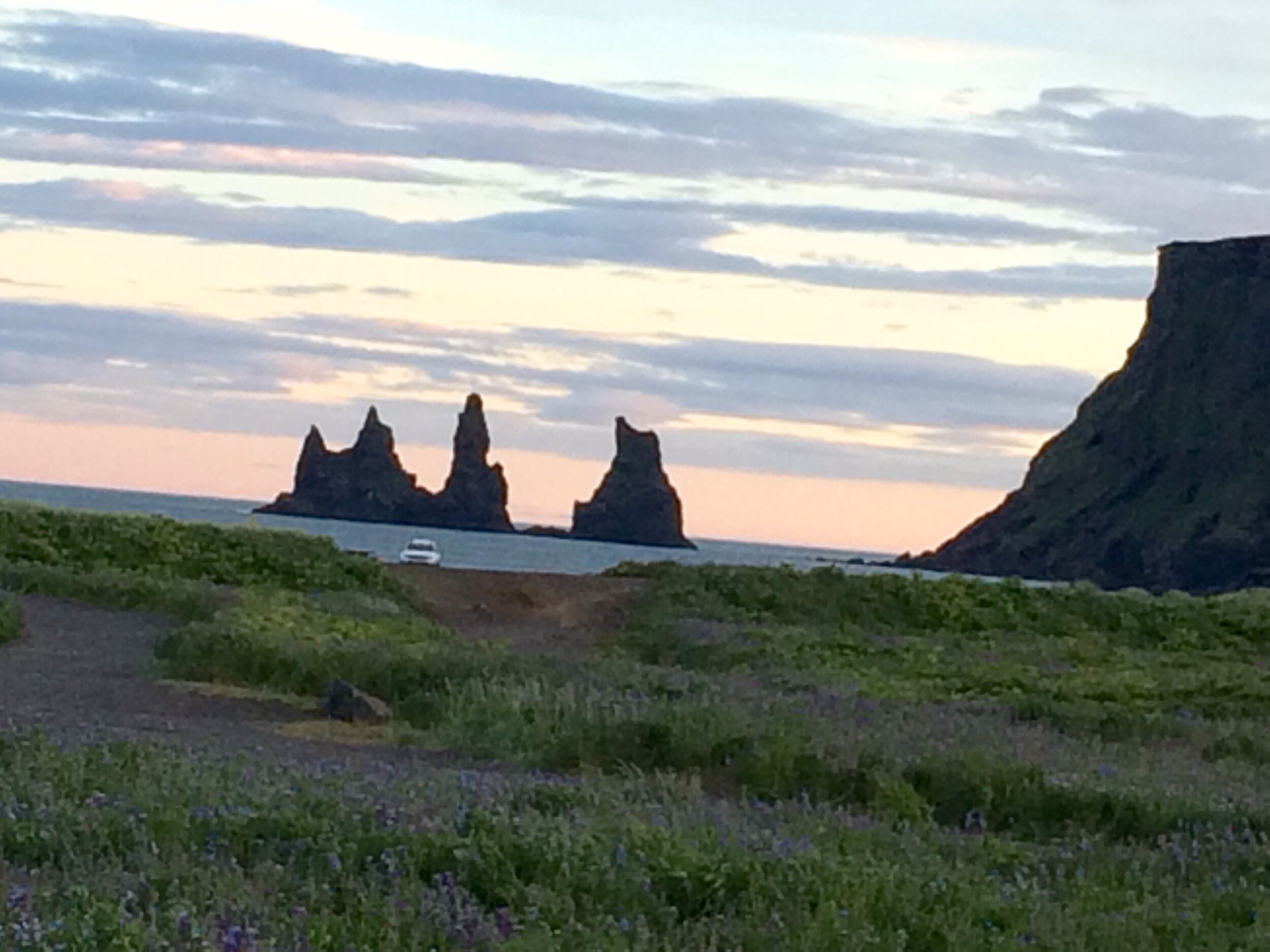
If you like this article about the world’s most unique, remote beaches, please PIN IT!
This page contains affiliate links. If you click on the product links and make a purchase, it allows me to make a small commission at no extra cost to you! Thank you for your support and I hope you find value in this content!




























